Japanese drinks offer a captivating journey through flavors, blending ancient traditions with modern creativity. From the earthy richness of matcha and the delicate sweetness of sakurayu to the bold complexity of sake and the smoothness of whisky, each sip tells a story of Japanese craftsmanship and culture. Whether you're savoring a cup of kabusecha or indulging in a glass of umeshu, Japanese beverages invite you to explore a world of taste sensations, where tradition meets innovation, and every sip is an experience to remember.
Matcha
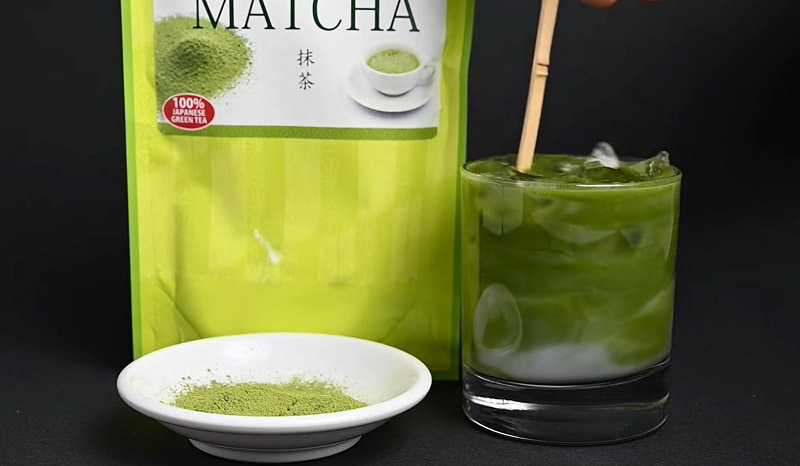
Matcha is a type of powdered green tea that is traditionally used in Japanese tea ceremonies. It is made from finely ground green tea leaves, specifically from shade-grown tea plants. The leaves are carefully harvested, dried, and ground into a fine powder, which is then whisked with hot water to produce a frothy, vibrant green tea. Matcha is prized for its vibrant green color, distinct flavor, and potential health benefits. It contains high levels of antioxidants, vitamins, and minerals, making it a popular choice among health-conscious consumers. Additionally, matcha is known for its calming effects due to the presence of the amino acid L-theanine, which can promote relaxation and mental clarity. In recent years, matcha has gained popularity beyond traditional tea ceremonies and is now used in various culinary applications, including matcha lattes, smoothies, desserts, and savory dishes. It has also become a trendy ingredient in the wellness and food industries, with matcha-flavored products appearing in cafes, restaurants, and grocery stores worldwide.
Sake
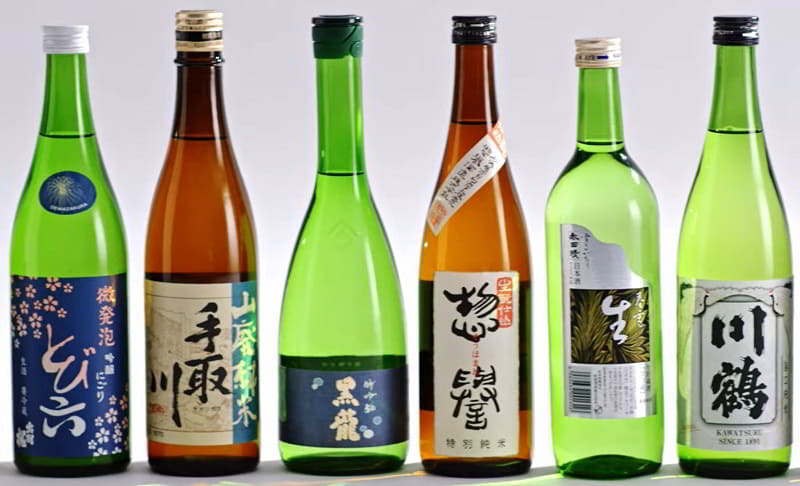
Sake, often called Japanese rice wine, hails from Japan and is created through the fermentation of polished rice. Despite its name, sake's production process resembles beer more than wine, as starch in the rice is converted into sugars that ferment into alcohol. This differs from wine, which typically ferments naturally occurring sugars in fruits like grapes. Sake is enjoyed chilled, at room temperature, or gently warmed, depending on the drinker's preference and the type of sake being served. Alongside sake, a diverse range of dishes is commonly served to complement and elevate its flavors. This versatile beverage holds cultural significance in Japan and has gained popularity worldwide.
Yakult
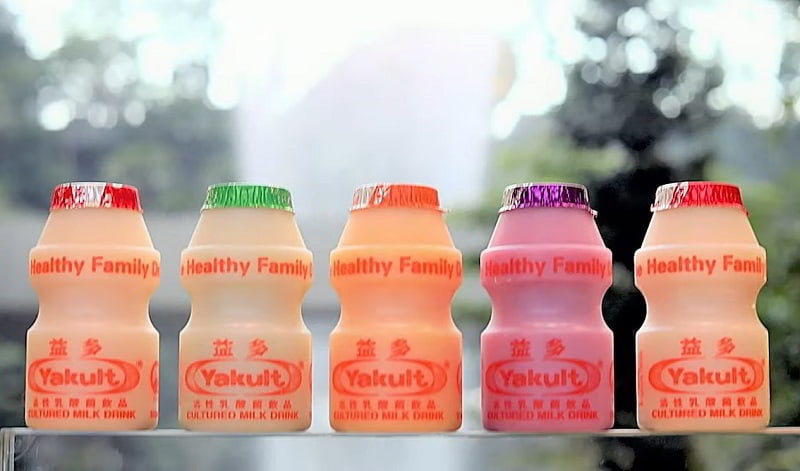
Yakult is a popular beverage that is commonly consumed as a probiotic drink. It is a fermented milk product that contains a unique strain of beneficial bacteria called Lacticaseibacillus casei Shirota. Yakult is characterized by its small bottle size, usually containing 65 milliliters of the drink. The beverage has a smooth and creamy consistency with a slightly sweet and tangy taste. It is often described as refreshing and easy to drink. Yakult is widely recognized for its potential health benefits. The probiotic bacteria in Yakult are believed to support digestive health by maintaining a healthy balance of beneficial bacteria in the gut. Regular consumption of Yakult is said to improve digestion, strengthen the immune system, and promote overall well-being. It is commonly consumed as a daily supplement, often in the morning or after meals. Yakult is available in various countries around the world and has gained a loyal following due to its reputation as a convenient and tasty way to support gut health.
Ramune
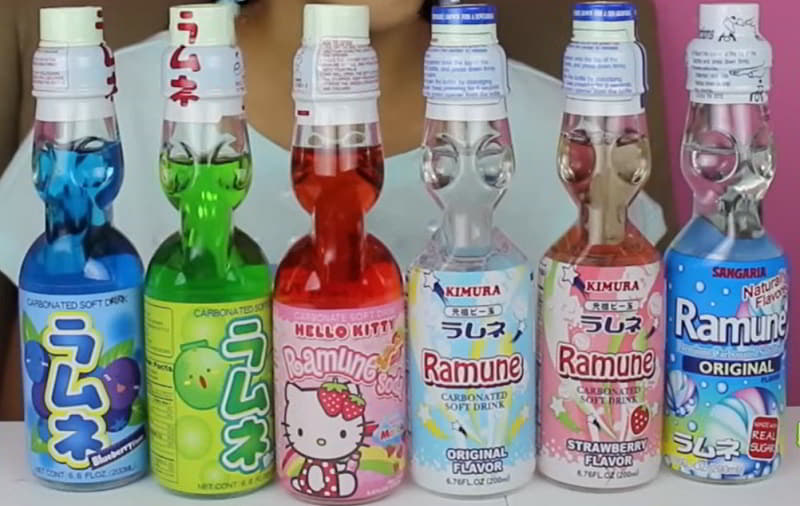
Ramune stands as a beloved carbonated soft drink originating back to 1884 in Kobe, Japan, introduced by the Scottish pharmacist Alexander Cameron Sim. Packaged uniquely in a Codd-neck bottle, characterized by a sealed mouth with a round marble, Ramune's pressure keeps it sealed without a cap. The lime-lemon flavor remains the original and quintessential taste, but the beverage has since expanded its repertoire to include a staggering 57 flavors. As its popularity surges, Ramune embraces novelty with diverse packaging designs and collaborations with iconic Japanese franchises like Hello Kitty and Pokémon. Among the myriad flavors are common favorites such as peach, cola, melon, and bubble gum, alongside more adventurous options like takoyaki, curry, and wasabi, enticing consumers with an array of intriguing tastes.
Shōchū

Shōchū is a traditional distilled spirit with a rich cultural heritage. Originating in Japan, it is typically crafted from a variety of ingredients, including barley, sweet potatoes, rice, buckwheat, or even sugar cane. The production process involves fermentation of the chosen ingredient followed by distillation to create a potent alcoholic beverage. Shōchū is known for its versatility and can be enjoyed in various ways. It is often consumed straight or on the rocks, allowing its unique flavors and aromas to be appreciated. Additionally, it can be mixed with water, hot or cold, to create a refreshing highball. Some people also enjoy it mixed with other beverages like green tea or fruit juices. This spirit holds a special place in Japanese culture and is commonly consumed during social gatherings, meals, or as a way to unwind after a long day.
Habushu
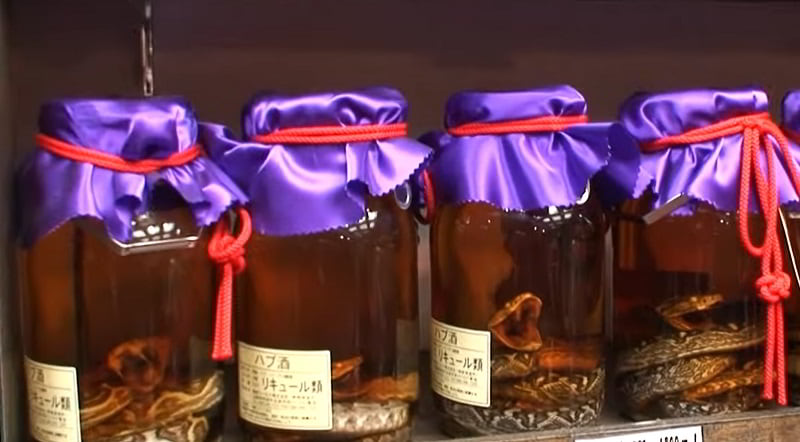
Habushu, also referred to as "habu sake" or "Okinawan snake wine," stands as a traditional alcoholic beverage originating from Japan's Okinawa Prefecture. Crafted by immersing a venomous pit viper, the habu snake, in either rice liquor or awamori, a locally distilled spirit, it presents a distinctive infusion. The habu snake, indigenous to Okinawa, is esteemed for its purported medicinal properties, prompting the consumption of habushu for perceived health advantages, such as heightened vitality and stamina. Through a prolonged immersion process lasting several months or even years, the venom of the habu snake is neutralized by the high alcohol content, ensuring the safety of the beverage for consumption. Habushu, esteemed as a cultural curiosity, finds its place on special occasions and as a novelty for tourists. Renowned for its robust, earthy taste, it is typically savored in modest quantities due to its potency. While not universally appealing, habushu remains deeply entrenched in Okinawan culture and tradition.
Pocari Sweat

Pocari Sweat, crafted by Otsuka Pharmaceutical, is a sports beverage, known for its gentle flavor, smooth consistency, and absence of fizz. Infused with a subtle grapefruit essence and leaving behind only a faint aftertaste, its ingredients commonly include sodium chloride, water, calcium lactate, sugar, citric acid, trisodium citrate, potassium chloride, magnesium carbonate, and flavoring. Packaged in aluminum cans, PET bottles, and as a soluble powder, it presents a low-sugar alternative known as Pocari Sweat Ion Water, sweetened artificially. Targeting athletes, outdoor enthusiasts, and those prioritizing hydration, Pocari Sweat provides a convenient and enjoyable means to restore fluids and electrolytes during physical exertion or instances of dehydration.
Lucozade

Lucozade is a well-known energy drink brand manufactured and marketed by the Japanese company Suntory. Originating in the United Kingdom, Lucozade has become synonymous with providing a quick energy boost due to its glucose and carbohydrate content. Originally introduced as a health drink in 1927, it has since expanded its product range to include various flavors and formulations tailored to different consumer preferences and needs. Lucozade is widely available in many countries across the globe, commonly found in convenience stores, supermarkets, and vending machines. It remains a popular choice for individuals seeking a convenient and flavorful way to replenish their energy levels during physical activity or times of fatigue.
Calpis

Calpis, marketed as Calpico, is a soft drink produced by Calpis Co., Ltd., a subsidiary of Asahi Breweries. Renowned for its non-carbonated nature, it offers a delicate flavor reminiscent of yogurt or Yakult, with a mild acidity. Crafted from ingredients like water, dry milk, and lactic acid, Calpis undergoes lactic acid fermentation during production. Sold as a concentrate, it's mixed with water or occasionally milk prior to consumption. Additionally, a pre-diluted version named Calpis Water exists, alongside its carbonated counterpart, Calpis Soda. Beyond beverages, Calpis finds its way into various culinary applications; it's utilized to flavor kakigōri and serves as a mixer for cocktails and chūhai. This versatile drink has gained popularity not only for its unique taste but also for its adaptability in different beverage and culinary creations.
Hōjicha
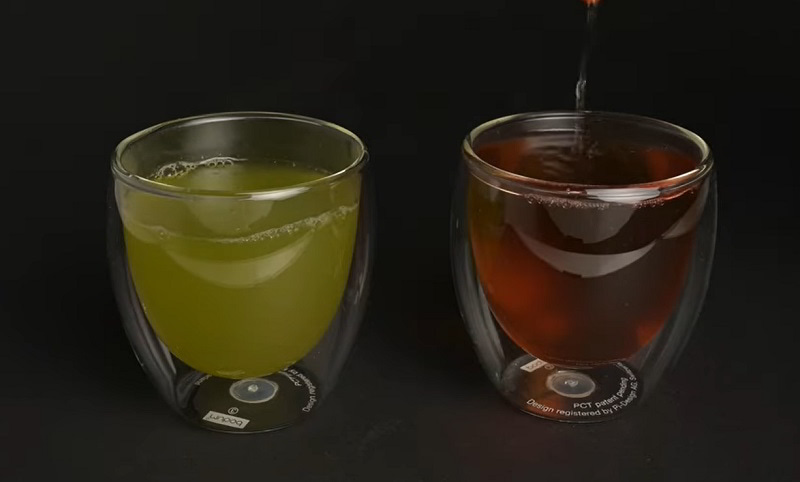
Hōjicha is a type of green tea that differs from traditional green teas in its preparation method and flavor profile. Unlike other green teas, hōjicha is roasted, which gives it a distinctive reddish-brown color and a unique flavor. To make hōjicha, green tea leaves are roasted at a high temperature, which causes caramelization and imparts a nutty, toasty flavor to the tea. This roasting process also reduces the caffeine content, making hōjicha a popular choice for those looking for a milder tea option with less caffeine. Hōjicha is known for its smooth, mellow taste with subtle roasted notes and a slightly sweet finish. It is often enjoyed as a comforting and soothing beverage, particularly in the evening or after meals. In addition to being served hot, hōjicha can also be enjoyed cold or used as a flavoring in various culinary creations, such as desserts and savory dishes. Its versatility and gentle flavor make it a beloved choice among tea enthusiasts and food lovers alike.
Midori
-1714040953.jpg)
Midori is a vibrant green-colored liqueur that found its origin in Japan. Its name, "Midori," translates to "green" in Japanese, reflecting its distinctive hue. This liqueur is renowned for its sweet and fruity flavor, reminiscent of melon, particularly honeydew melon. Created in 1964, Midori quickly gained popularity both in Japan and internationally. It is made from a blend of neutral grain spirits and natural fruit flavors, giving it its characteristic taste profile. Midori is commonly used as a base for cocktails, adding a bright green color and a deliciously sweet melon flavor. It pairs well with various spirits, juices, and mixers, making it a versatile ingredient in the bartender's repertoire. Popular cocktails featuring Midori include the Midori Sour, Japanese Slipper, and Scooby Snack. Its eye-catching color and fruity taste make it a favorite choice for both amateur mixologists and seasoned bartenders looking to add a touch of sweetness and vibrancy to their creations.
Genmaicha
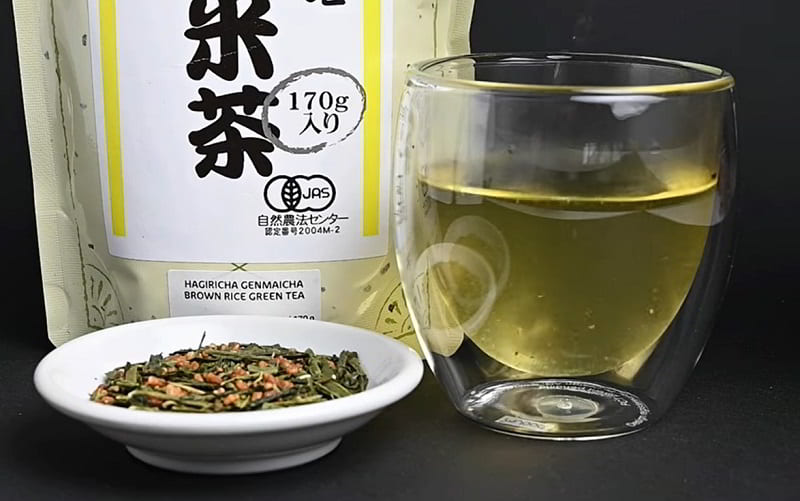
Genmaicha, a green tea infused with roasted popped brown rice, is colloquially known as "popcorn tea" due to its resemblance to popcorn. Historically dubbed "people's tea," the addition of rice acted as a filler, making it more affordable for poorer Japanese. Today, genmaicha enjoys popularity across all societal segments. It was traditionally consumed by those fasting or enduring long periods between meals. The sugar and starch in the rice impart a warm, nutty flavor to the tea, renowned for its soothing effect on the stomach. Steeping genmaicha yields a light yellow hue, and its flavor seamlessly melds the freshness of green tea with the comforting aroma of roasted rice. Renowned for its mild taste and stomach-settling properties, genmaicha remains a beloved choice for tea enthusiasts worldwide.
Sencha
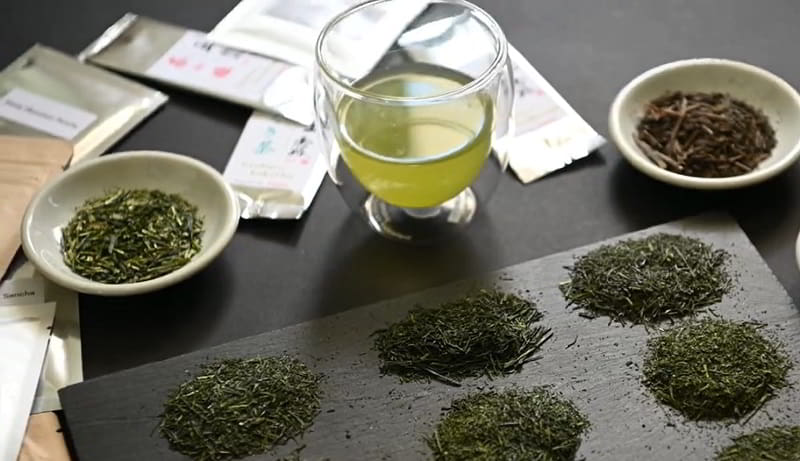
Sencha, a beloved green tea variety renowned for its delicate flavor and vivid green hue, holds a prominent place in both domestic and international tea culture. Harvested from young leaves of the Camellia sinensis plant, sencha undergoes immediate steaming post-picking to retain its fresh, grassy taste and vibrant color. Following steaming, the leaves are carefully rolled and dried. Sencha is prized for its smooth, subtly sweet flavor profile with delicate vegetal undertones, coupled with a refreshing aroma and clean finish, making it an invigorating choice throughout the day. While typically brewed with hot water, it also lends itself well to cold brewing and serves as a versatile base for flavored teas and blends. Valued for its health benefits, including antioxidant content and potential immune support, sencha offers a delightful tea-drinking experience.
Chūhai
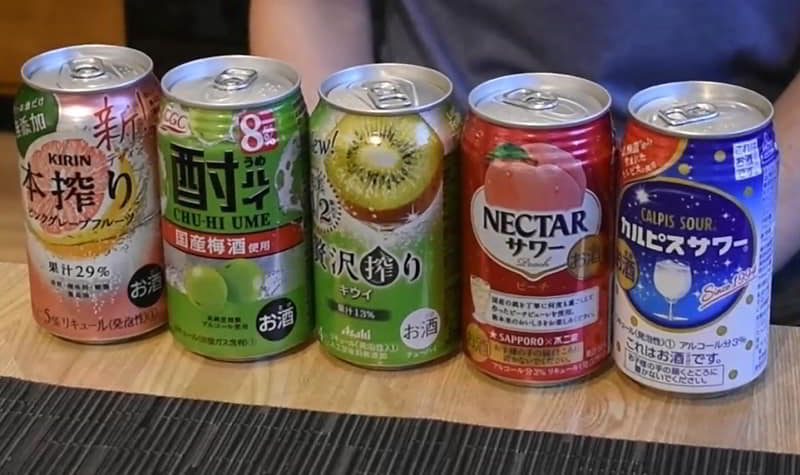
Chūhai, a popular alcoholic beverage with roots in Japan, typically features a base of barley shōchū combined with carbonated water and lemon flavoring in its traditional form. However, modern commercial versions may substitute vodka for shōchū. Beverage companies have expanded the chūhai repertoire with a wide array of flavors, including lime, strawberry cream, grapefruit, apple, lychee, orange, pineapple, grape, kyoho grape, kiwi, ume, yuzu, peach, and cream soda. This diversity caters to various preferences and tastes, reflecting the evolving landscape of chūhai consumption. While rooted in tradition, the beverage's adaptability and versatility in flavor combinations contribute to its continued popularity both domestically and internationally, making it a favorite choice among consumers seeking refreshing and flavorful alcoholic options.
Barley Tea
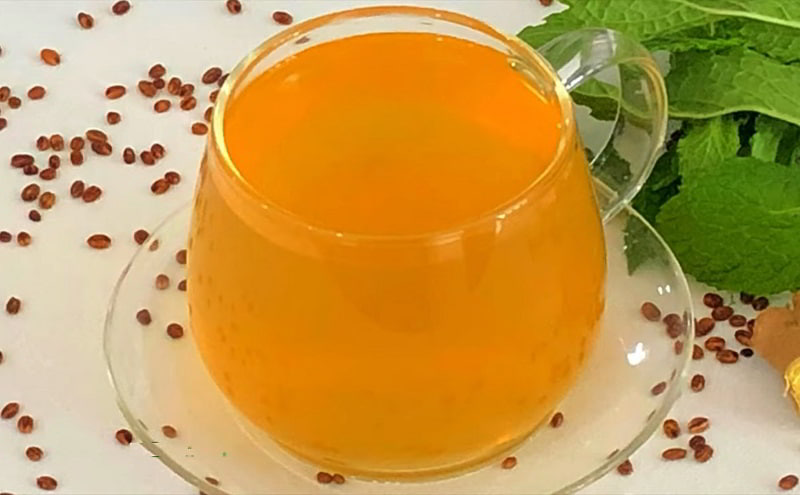
Barley tea, known as "mugi-cha" in Japan, is a popular beverage enjoyed both hot and cold throughout the year, particularly during the hot summer months. To prepare mugi-cha, roasted barley grains are steeped in hot water, resulting in a refreshing and slightly nutty-flavored tea. The tea is strained and then served either hot or chilled over ice, depending on personal preference and the weather. Mugicha is valued for its mild flavor, low caffeine content, and purported health benefits. It is often consumed as a caffeine-free alternative to other teas and beverages, making it suitable for all ages, including children and the elderly. Beyond its refreshing taste, mugi-cha is also believed to aid digestion and promote hydration, making it a popular choice for staying cool and refreshed during Japan's hot and humid summers. It is readily available in supermarkets, convenience stores, and vending machines throughout Japan, reflecting its widespread popularity and cultural significance.
Umeshu
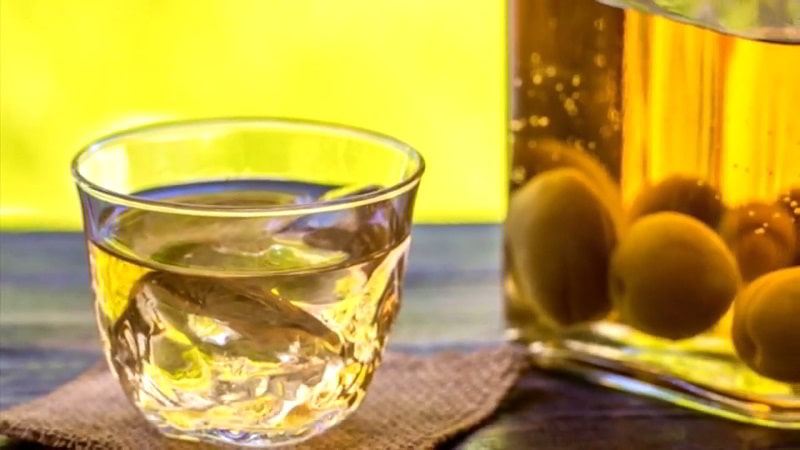
Umeshu, also referred to as plum wine or Japanese plum liqueur, is a cherished beverage crafted by steeping ume fruits in alcohol and sugar. Harvested while still green and firm, the ume fruits are meticulously prepared by washing, drying, and then left to infuse in alcohol, typically shōchū or occasionally sake or brandy. This concoction undergoes fermentation for several months to a year, allowing the flavors of the fruit to meld with the alcohol. Following fermentation, sugar is added to harmonize the tartness, yielding a velvety liqueur with a nuanced flavor profile. Umeshu is frequently savored as a dessert wine or aperitif, served neat over ice or blended with soda water or tonic for a revitalizing cocktail. Widely enjoyed in Japan, particularly during the summer, umeshu is valued not only for its refreshing taste but also for its perceived health benefits, including aiding digestion and enhancing circulation. It is crafted in households across Japan and commercially produced by distilleries and breweries, further enriching its cultural significance.
Chrysanthemum Tea
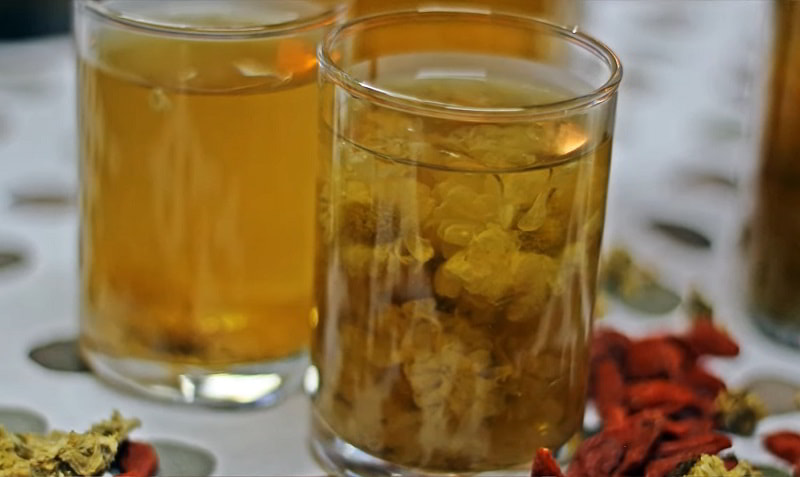
In Japan, chrysanthemum tea is often referred to as "gukhwa-cha." Made from dried chrysanthemum flowers, primarily Chrysanthemum morifolium or Chrysanthemum indicum species, this herbal infusion is cherished for its delicate flavor and potential health benefits. To prepare gukhwa-cha, dried chrysanthemum flowers are steeped in hot water, allowing their essence to infuse into the liquid. The resulting tea boasts a light, floral aroma and a subtle, slightly sweet taste, often enjoyed hot or cold depending on the season. In Japan, gukhwa-cha is appreciated for its refreshing flavor and believed health properties, including relaxation, promoting eye health, and providing relief for sore throats. Its cooling nature makes it a popular choice for refreshing beverages, particularly during warmer months. Gukhwa-cha is commonly served in tea houses, restaurants, and households throughout Japan, accompanying meals or enjoyed as a soothing beverage at any time of day.
Awamori
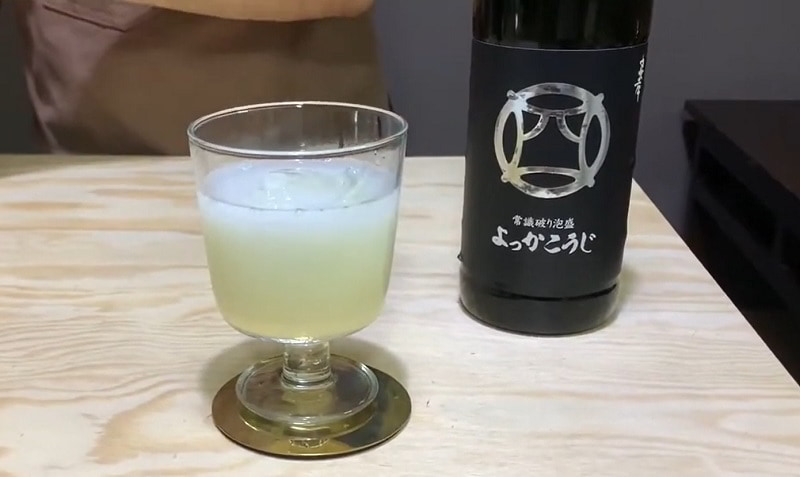
Awamori is a traditional distilled alcoholic beverage native to the Okinawa Prefecture in Japan. This unique spirit is made from Thai indica rice and is distinct from other Japanese spirits like sake and shochu due to its production process and regional origin. To make awamori, steamed Thai rice is fermented with black koji mold (Aspergillus awamori) and yeast, then distilled to produce a potent liquor with a higher alcohol content than sake or shochu. It undergoes aging in traditional clay pots to develop its complex flavors and smooth texture. Awamori is known for its robust taste, characterized by earthy and floral notes, as well as its strong aroma. It is typically enjoyed neat, on the rocks, or mixed with water or ice. Considered a cultural symbol of Okinawa, awamori holds a significant place in local customs and celebrations. It is often served during festivals, ceremonies, and social gatherings, reflecting the rich cultural heritage of the region.
Strong Zero

Strong Zero, also known as −196, is a chūhai brand crafted by Beam Suntory, available across Japan, Taiwan, the Philippines, and Australia. Like other chūhai options, it comes in various flavors and is widely stocked in convenience stores and vending machines. The "strong" moniker signifies its elevated alcohol content, typically around 9% ABV in Japan, while "zero" indicates its sugar-free formulation. Strong Zero's production involves freezing fruit in liquid nitrogen, which has a boiling point of −195.8 °C, which gives it "−196 °C" in its name. After freezing, the fruit is pulverized and combined with beverage alcohol such as shochu, vodka, and soda. This process yields a drink with reduced calories and sugar content. Regular introduction of new flavors, in sync with seasonal ingredients, is a common trend in Japan's dynamic food and beverage industry.
Amazake
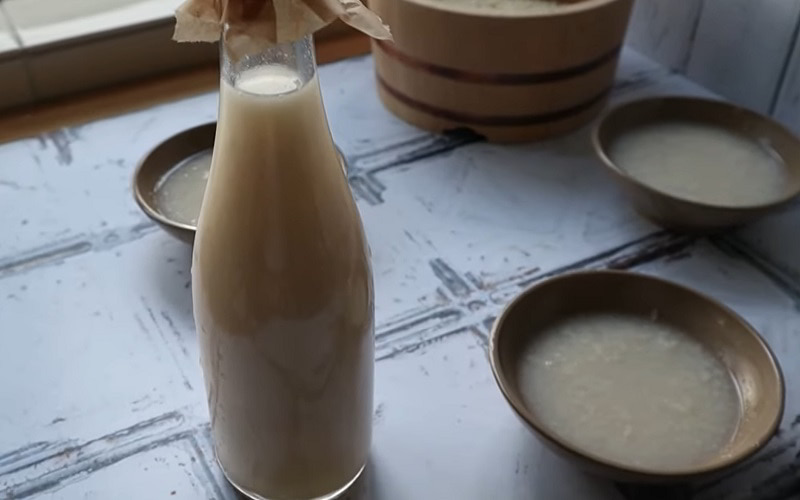
Amazake is a crowd-favorite beverage crafted from fermented rice, known for its sweet, low-alcohol, or non-alcoholic nature. It falls under the umbrella of Japanese culinary creations utilizing the koji mold Aspergillus oryzae, shared by miso, soy sauce, and sake. Over centuries, various recipes for amazake have emerged. One common method involves incorporating koji into cooled whole grain rice, prompting enzymes to convert carbohydrates into natural sugars as the mixture ferments. Alternatively, sake kasu blended with water and sugar can yield amazake. This versatile drink finds application as a dessert, snack, natural sweetener, salad dressing, or smoothie base. Notably, a traditional amazake variant entails simmering amazake and water, often enhanced with a touch of finely grated ginger, a cherished street vendor offering still served in inns, teahouses, and festivals, preserving its cultural significance.
Ginger Tea
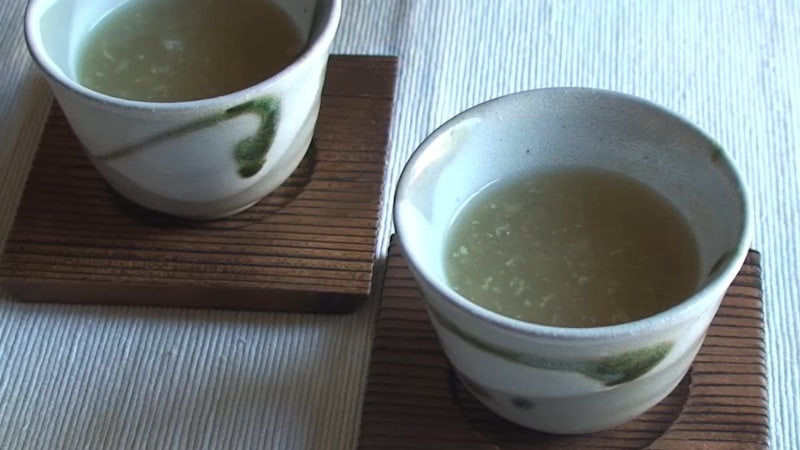
In Japan, ginger tea, known as "shōgayu," is deeply ingrained in traditional culinary and wellness customs. Crafted by steeping fresh ginger slices or grated ginger in hot water, this aromatic infusion presents a spicy yet calming flavor with earthy notes. To prepare shōgayu, thin slices of fresh ginger root are added to boiling water and allowed to simmer briefly. The resulting brew, strained and served hot, is often relished on its own or enhanced with honey or lemon for added sweetness or zest. Beyond its taste, shōgayu is prized for its believed health benefits, including aiding digestion, soothing nausea, and imparting warmth during colder seasons. Many Japanese indulge in shōgayu as a comforting start to the day or a relaxing evening ritual. Whether appreciated for its flavor or therapeutic properties, ginger tea holds a revered status in Japanese culture, symbolizing wellness and vigor across generations.
Gyokuro

Gyokuro, a prized green tea, is celebrated for its delicate flavor and vibrant green hue. Its exceptional quality stems from a meticulous cultivation process: tea plants are shaded from direct sunlight for weeks before harvesting, enriching the chlorophyll content and reducing bitterness. This method yields Gyokuro's signature rich, sweet taste with a smooth umami finish. After harvest, the leaves undergo careful steaming, rolling, and drying. Brewing Gyokuro requires precision, using lower water temperatures and shorter steeping times to extract its delicate flavors without bitterness. Revered as a luxury beverage, Gyokuro is cherished for its nuanced taste and calming qualities, often served in small cups to savor its complex aroma and lingering sweetness.
Black Vinegar
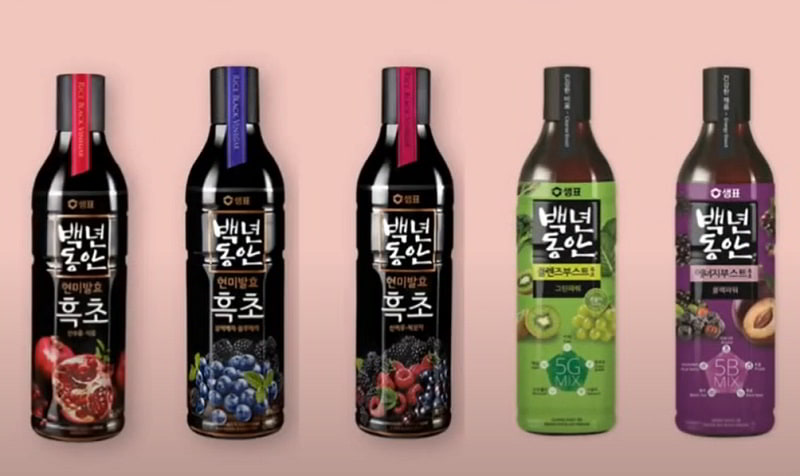
Kurozu, a milder version of black vinegar in Japan, is exclusively made from brown rice, distinguishing it from other types of black vinegar. This traditional condiment undergoes a fermentation process solely using brown rice as its ingredient. Kurozu boasts a lighter flavor profile compared to its counterparts, characterized by gentle acidity and subtle sweetness. It is highly valued for enhancing various dishes like dressings, sauces, and pickles. Besides its culinary applications, kurozu is esteemed for its potential health benefits, believed to aid digestion and overall wellness. It serves as both a flavor enhancer and functional food in Japanese culture. Additionally, kurozu can be diluted with water or mixed with other ingredients to create a refreshing beverage, enjoyed either cold or hot. Some individuals opt to sweeten it with honey or fruit juices for added flavor.
Fermented Tea
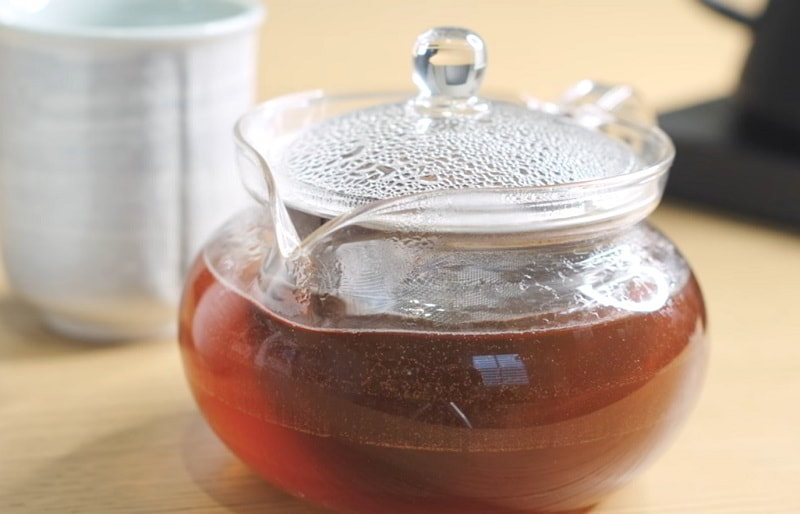
In Japan, various types of fermented tea showcase regional diversity in tea culture. One unique variety is Toyama prefecture's kurocha, Japan's sole piled tea, akin to Chinese post-fermented teas. Traditionally, Toyama kurocha is prepared by boiling in water, adding salt, and whisking vigorously, evoking a traditional tea ceremony. It holds significance in religious rituals and meetings in the Asahi region of the prefecture. Awabancha, crafted in Tokushima prefecture, and batabatacha, akin to Toyama kurocha in Asahi, Toyama, are derived from bancha, or second flush tea leaves, undergoing bacterial fermentation. Goishicha from Ōtoyo, Kōchi, and Ishizuchi kurocha from the foot of Mount Ishizuchi in Ehime prefecture employ a two-step fermentation process, involving aerobic fungi followed by anaerobic bacteria. Each fermented tea variety embodies local traditions and preferences, contributing to Japan's rich tapestry of tea heritage.
Lipovitan
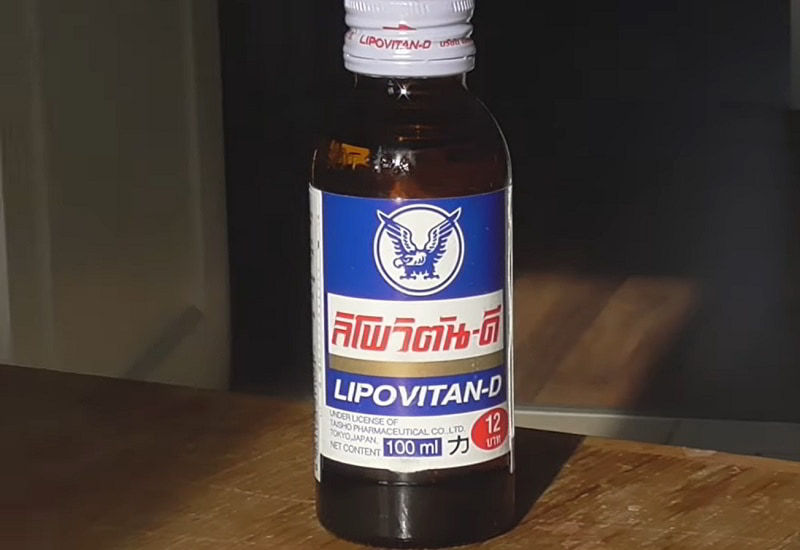
Lipovitan is a popular energy drink originating from Japan. Produced by Taisho Pharmaceutical Co., Ltd., it is widely consumed for its revitalizing properties. Lipovitan contains a blend of vitamins, amino acids, and other ingredients believed to boost energy levels and alleviate fatigue. The drink is often favored by individuals seeking a quick energy boost during periods of physical or mental exertion. It is commonly consumed before or during sports activities, long workdays, or late-night studying sessions. Lipovitan is available in various formulations, including regular and sugar-free versions, catering to different preferences and dietary needs. It is typically sold in small, convenient bottles, making it easy to carry and consume on the go. Although Lipovitan is primarily marketed as an energy drink, some people also enjoy its taste, which is often described as sweet and slightly fruity. Overall, Lipovitan remains a popular choice among those looking for a convenient and effective way to replenish their energy levels and stay alert throughout the day.
Sake Bomb
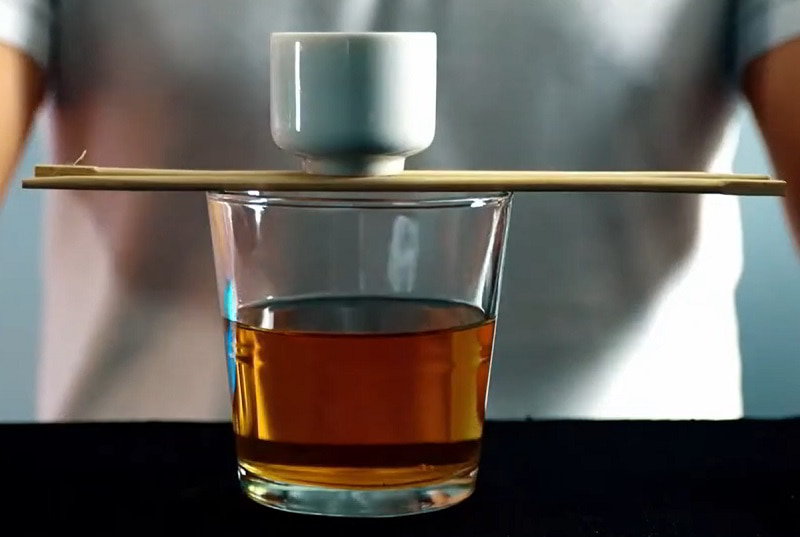
Sake bomb is a popular drinking tradition in Japan that combines the traditional Japanese rice wine, sake, with beer. It is a fun and interactive way to enjoy alcohol with friends and is often seen in izakayas, Japanese pubs or bars. To make a sake bomb, a small cup or shot glass filled with sake is placed on top of chopsticks, which are balanced on the rim of a larger beer glass. The participants then join together in unison and slam the table, causing the sake cup to fall into the beer glass. The mixture of sake and beer creates a unique flavor and experience. The sake bomb is typically consumed immediately after the cup falls into the beer glass, as the combination tends to create a foaming effect. It is a thrilling and communal way to drink, often accompanied by cheers and laughter. It is an adventurous way to enjoy both sake and beer, bringing people together in a fun and lively atmosphere.
Beer in Japan

In Japan, beer holds a revered status, embodying a rich heritage and offering diverse options. Dominated by lagers renowned for their crispness and refreshing appeal, the market is shaped by major breweries employing a mix of traditional and modern brewing techniques. Complementing these mainstream offerings is Japan's thriving craft beer scene, characterized by a multitude of microbreweries and brewpubs crafting inventive brews spanning from hoppy IPAs to indulgent stouts. Embedded deeply within Japanese social and culinary customs, beer serves as a centerpiece during gatherings, festivals, and meals, seamlessly accompanying dishes such as sushi and izakaya-style fare. Reflecting a harmonious blend of tradition and innovation, Japanese beer captivates enthusiasts with its quality, diversity, and cultural significance, fostering a sense of community and appreciation for its flavors and the shared experiences it evokes.
Aquarius
-1714747819.jpg)
Aquarius is a popular sports drink produced by The Coca-Cola Company. It is formulated to replenish electrolytes lost through sweating during physical activities and to aid in maintaining proper hydration levels. Available in various flavors such as lemon, grapefruit, and orange, Aquarius offers a refreshing and flavorful option for consumers. The drink is widely consumed by athletes, fitness enthusiasts, and individuals with active lifestyles to support their hydration needs during workouts, sports events, or outdoor activities. Its electrolyte-rich composition provides a quick and effective way to rehydrate the body, making it a convenient choice for those seeking to replenish fluids and essential minerals lost during exertion. With its reputation for reliability and its range of flavors, Aquarius has become a popular choice for hydration among people of all ages.
Kuchikamizake

Kuchikamizake is a traditional alcoholic beverage crafted through a distinctive fermentation method involving human saliva. In this process, rice is chewed and then expectorated into a container, where natural enzymes in saliva catalyze the breakdown of rice starches into fermentable sugars. The mixture is left to ferment naturally for a period, typically several days to weeks, transforming into a mildly alcoholic beverage. Although less common in modern times, kuchikamizake holds cultural significance, particularly in rural and indigenous Japanese communities where it is deeply rooted in tradition. It is often associated with rituals, ceremonies, and festivals, where it serves as a symbol of community and heritage. While the idea of using saliva in the fermentation process may raise eyebrows, aficionados appreciate kuchikamizake for its unique flavor and connection to Japan's cultural past. Today, it is predominantly produced on a small scale for ceremonial purposes rather than widespread commercial distribution.
Kukicha
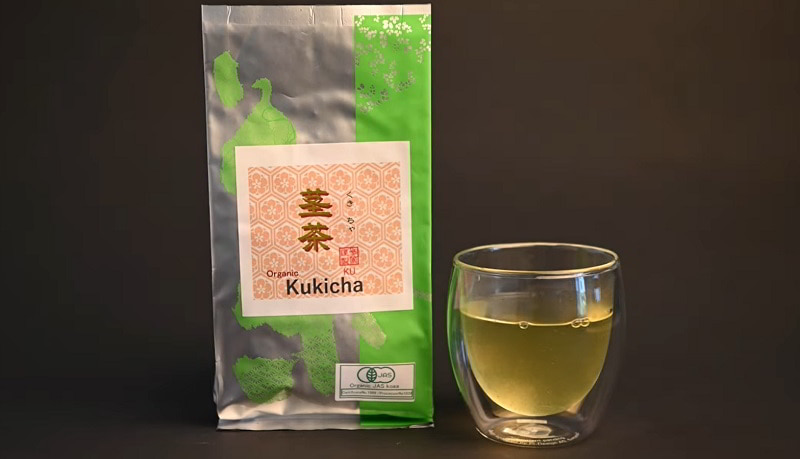
Kukicha, or "twig tea," is a popular beverage renowned for its unique flavor derived from the stems, twigs, and stalks of the Camellia sinensis plant. These components are meticulously roasted and blended to produce a delicate, earthy brew with subtle sweetness and nutty undertones. Beyond its distinctive taste, Kukicha is prized for its health benefits. With low caffeine content and abundant minerals, it offers a soothing option for relaxation. Moreover, its high antioxidant levels bolster the immune system and promote overall well-being. In Japanese culture, Kukicha is a staple daily tea enjoyed for hydration and refreshment throughout the day. It can be served hot or cold, catering to individual preferences and seasonal changes. Some enthusiasts also incorporate Kukicha into tea blends or use it in culinary creations. Embodying Japan's tea-drinking traditions, Kukicha holds a special place as both a flavorful beverage and a source of holistic wellness.
Nigori
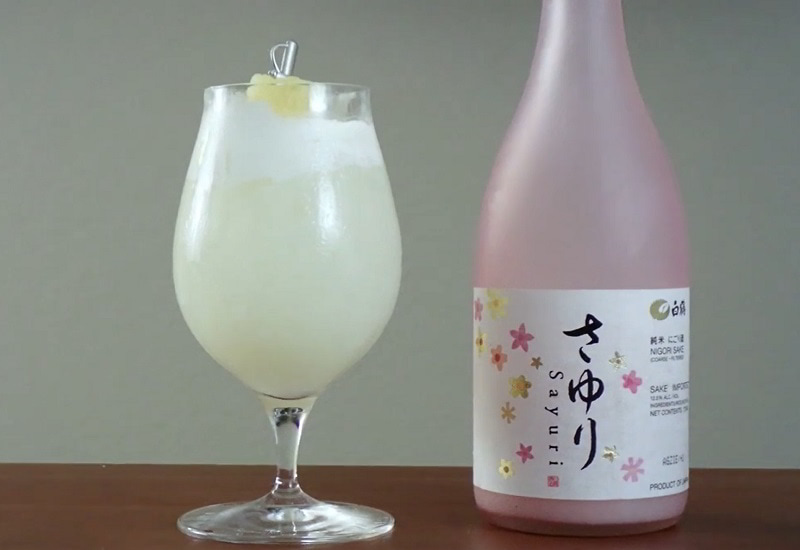
Nigori stands as a traditional sake style known for its cloudy appearance and velvety texture. Diverging from clear sakes, nigori remains unfiltered, preserving rice sediment within the liquid, thus yielding a milky or cloudy look. This lack of filtration contributes to its rich and full-bodied flavor profile, characteristic of nigori. Typically, sake brewers utilize coarsely ground rice and allow some rice solids to persist in the final product, defining nigori's signature texture and mouthfeel. The taste leans slightly sweet, with nuances varying based on distinct brewing methods and rice selections. Often served chilled, nigori complements an array of dishes, particularly those with spicy or savory flavors. Its creamy texture and subtle sweetness render it a favorite among connoisseurs seeking a distinctive and indulgent sake encounter.
Oronamin C

Oronamin C is a popular energy drink developed by Otsuka Pharmaceutical Co., Ltd. It is renowned for its unique combination of vitamins, minerals, and amino acids, aimed at providing a quick energy boost and enhancing overall vitality. Oronamin C contains a blend of nutrients, including vitamin C, B-complex vitamins, taurine, and royal jelly extract, which are believed to promote alertness and combat fatigue. The drink's refreshing citrus flavor, coupled with its energizing effects, has made it a favorite among consumers in Japan. Oronamin C is often consumed during periods of physical exertion, work, or study, as well as to combat fatigue or boost immunity during illness. With its wide availability in convenience stores, vending machines, and supermarkets across Japan, Oronamin C has become a staple beverage for many seeking a quick and convenient energy boost.
Mitsuya Cider
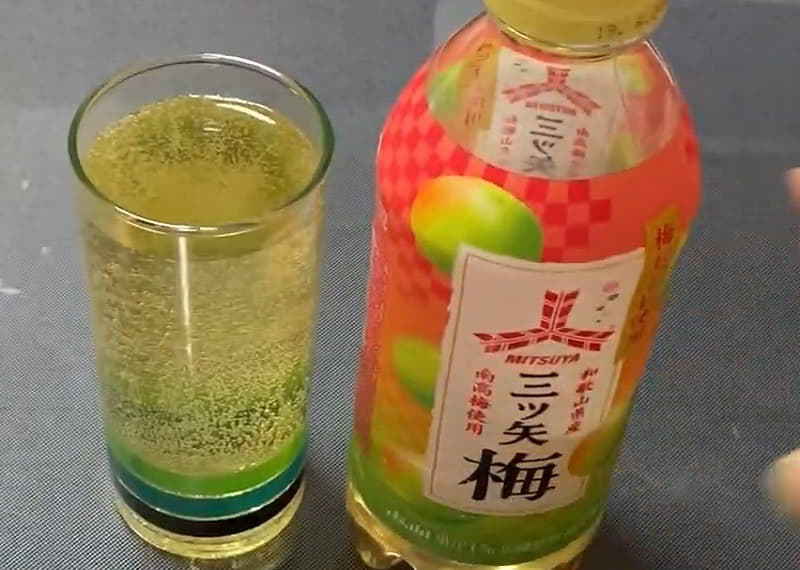
Mitsuya Cider is a renowned carbonated soft drink that was originally created in 1884. Acquired by Asahi Soft Drinks in 1972, it has solidified its status as an iconic beverage in Japan. Known for its refreshing qualities, Mitsuya Cider offers a delightful combination of fizziness and flavor. It boasts a crisp and invigorating taste with hints of lemon-lime, making it a popular choice for quenching thirst and providing a refreshing break from the heat, particularly during the hot summer months. Enjoyed by people of all ages, Mitsuya Cider is often consumed on its own as a standalone beverage or used as a mixer for cocktails. With its enduring legacy, Mitsuya Cider has become a staple in Japanese culture, symbolizing relaxation, enjoyment, and a taste of nostalgia for many.
Boss Coffee
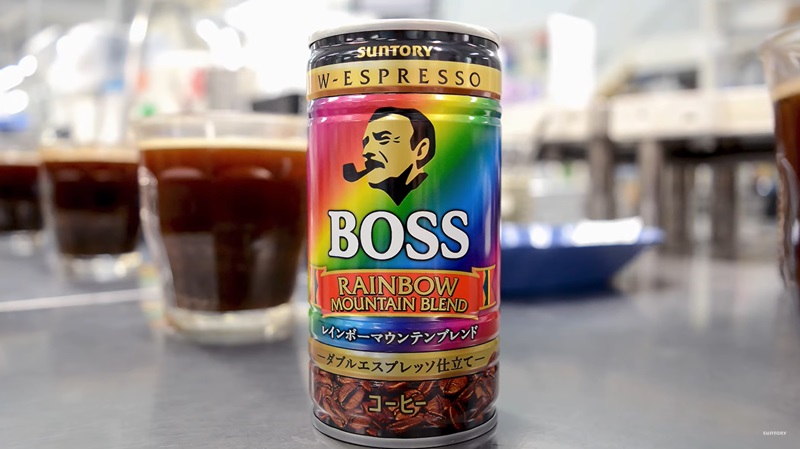
Boss Coffee is a renowned brand of canned coffee originating from Japan. Produced by the Suntory company, Boss Coffee has gained widespread popularity both domestically and internationally for its convenience and quality. Introduced in 1992, it offers a range of canned coffee varieties, including black coffee, café au lait, and flavored options. Boss Coffee is known for its rich and bold flavor profile, achieved through the use of high-quality coffee beans and precise brewing techniques. Packaged in convenient cans, Boss Coffee is favored by busy individuals seeking a quick and satisfying coffee fix on the go. Its availability in vending machines, convenience stores, and supermarkets across Japan makes it easily accessible to consumers.
Japanese Wine
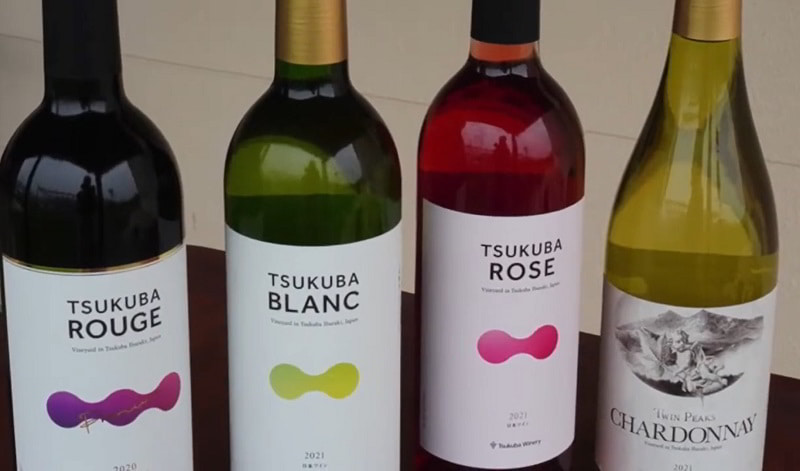
In Japan, wine holds a distinctive position as a beverage appreciated for its diverse flavors and cultural significance. While traditional drinks like sake remain deeply rooted, wine has gained popularity, reflecting evolving tastes and lifestyles. Japanese wine enthusiasts appreciate both domestic and imported varieties, with regions like Yamanashi and Nagano renowned for their vineyards and winemaking traditions. Wine is enjoyed in various settings, from casual gatherings to formal occasions, often paired with a wide range of Japanese cuisine to enhance dining experiences. Wine bars, tasting events, and educational programs contribute to a growing wine culture, providing opportunities for enthusiasts to explore and deepen their appreciation. Embracing both tradition and modernity, wine in Japan symbolizes a fusion of global influences within a rich cultural context, offering a taste of sophistication and refinement to consumers across the country.
Bancha
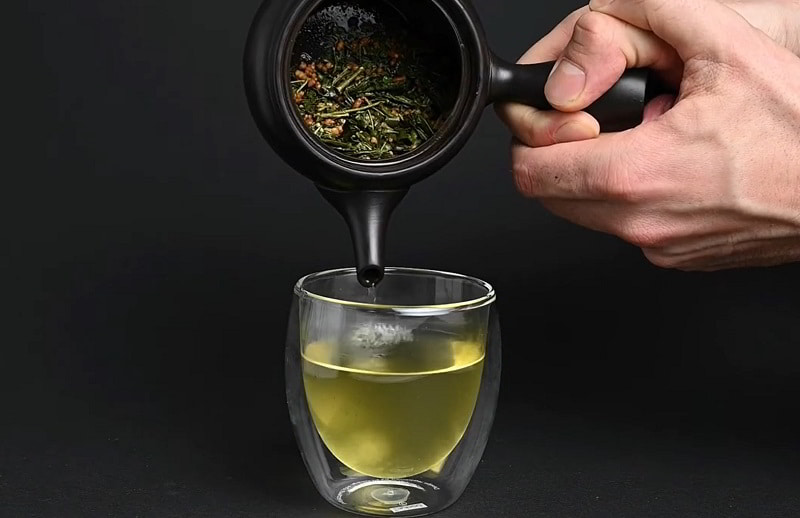
Bancha is a traditional green tea known for its mild flavor and earthy aroma. It is made from the same tea plant, Camellia sinensis, as other green teas but is harvested later in the season, typically between summer and autumn. The leaves used for bancha are larger and coarser than those used for higher-grade green teas like sencha, resulting in a more robust and slightly astringent taste. Bancha is often considered an everyday tea in Japan, enjoyed throughout the day with meals or as a comforting beverage. It is valued for its affordability and accessibility, making it a popular choice among tea drinkers seeking a simple and satisfying brew. In addition to its consumption as a hot beverage, bancha can also be served cold or used as a base for tea blends and infusions.
Carbonated Milk

Carbonated milk beverages, although less common than other soft drinks, do exist in Japan. These drinks typically feature a combination of carbonated water and milk, sometimes flavored with additional ingredients such as fruit syrups or sweeteners. While they may not be as widespread as other carbonated beverages, they offer a unique and refreshing option for those seeking a creamy and fizzy drink. Carbonated milk beverages are known for their creamy texture and slightly tangy flavor, which can vary depending on the specific formulation and any added flavorings. They are often enjoyed chilled as a refreshing treat, particularly during hot weather. While not as prevalent as other types of soft drinks, carbonated milk beverages contribute to the diverse array of beverages available in Japan, offering consumers a distinctive and enjoyable drinking experience.
Hoppy
-1714083098.jpg)
Hoppy, created in 1948 by the Kokuka Beverage Company, is a nearly non-alcoholic beverage with a beer-like taste, containing only 0.8% alcohol. Developed as an alternative to beer during times of scarcity, it remains closely associated with Tokyo, where it's widely consumed. Kokuka Beverage Co., Ltd., later renamed Hoppy Beverage Co., Ltd., holds the registered trademark for Hoppy. Unlike beer, Hoppy doesn't contain purine bases. Initially, Hoppy mixed with shochu, a Japanese distilled beverage, served as a beer substitute due to its affordability. This mixed drink, also referred to as Hoppy, is still popular, especially in Tokyo, and has recently regained popularity. It's commonly enjoyed at izakayas, Japanese-style pubs, particularly in suburban areas along the Keisei Main Line, underscoring its enduring popularity and cultural significance in Japan's beverage scene.
Canned Coffee
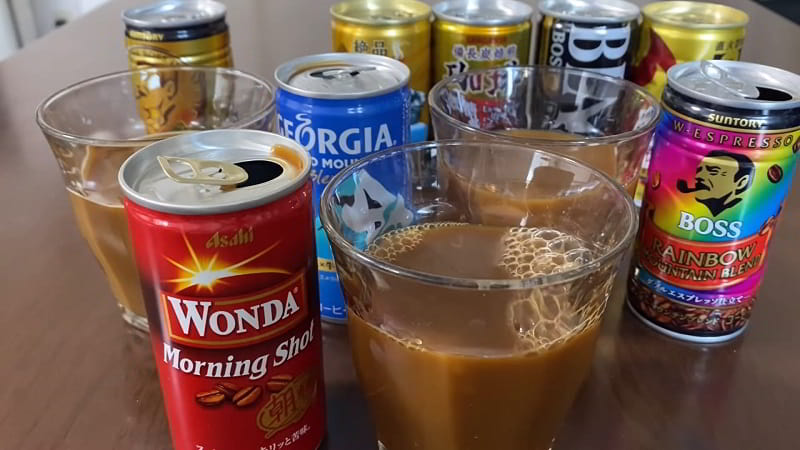
Canned coffee is an iconic beverage, offering convenience and refreshment to millions of people daily. Introduced in the 1960s by companies like UCC and later Pokka, canned coffee quickly became a staple in Japanese vending machines and convenience stores. These drinks typically feature brewed coffee mixed with milk and sweeteners, providing a smooth and mellow flavor profile that appeals to a wide range of tastes. Over the years, the market has expanded to include a variety of options, including black coffee, café au lait, and flavored variants like caramel and mocha. Canned coffee is appreciated not only for its convenience but also for its consistent quality and affordability. It's often enjoyed on the go, during commutes, or as a quick pick-me-up throughout the day. With its widespread availability and diverse offerings, canned coffee has become an integral part of Japanese beverage culture.
Georgia
-1714083840.jpg)
Georgia coffee holds a prominent place in Japan's beverage landscape, recognized for its convenience, quality, and diverse range of offerings. Introduced by Coca-Cola in the 1970s, Georgia coffee quickly gained popularity and became synonymous with canned coffee in Japan. Available in vending machines, convenience stores, and supermarkets across the country, Georgia coffee offers a variety of options to suit different preferences, including black coffee, café au lait, espresso, and flavored variants like vanilla and caramel. The brand is known for its consistent quality, with rich and aromatic brews that cater to coffee enthusiasts and casual drinkers alike. Georgia coffee also innovates with special editions and seasonal flavors, keeping consumers engaged and excited. With its widespread availability, delicious taste, and convenient packaging, Georgia coffee has become a beloved choice for coffee lovers throughout Japan, reflecting its enduring popularity and cultural significance.
Aojiru
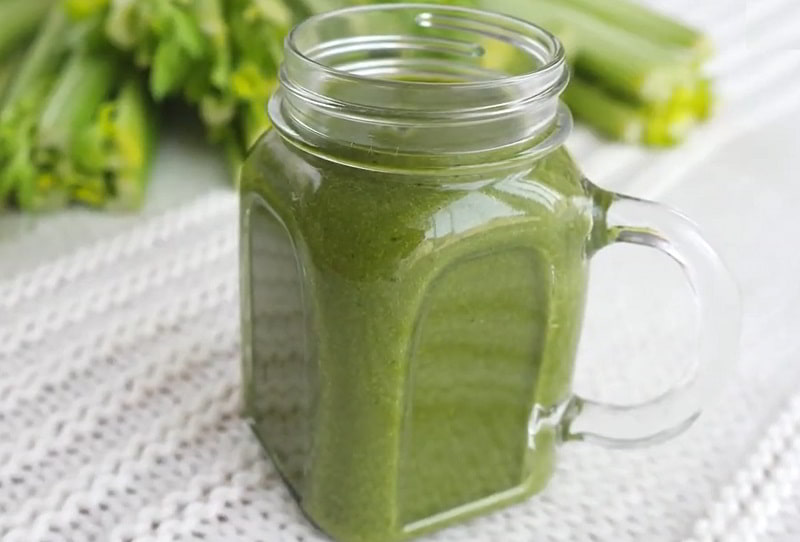
Aojiru, also known as green juice or green vegetable juice, is a popular health beverage renowned for its nutritional benefits. It is made from various green vegetables, typically including young barley grass, kale, spinach, and other leafy greens. Aojiru is rich in vitamins, minerals, antioxidants, and dietary fiber, making it a popular choice among health-conscious individuals. Originally developed in the 20th century by Dr. Niro Endo, Aojiru gained popularity for its potential health-promoting properties. It is believed to support digestion, boost the immune system, detoxify the body, and promote overall well-being. Aojiru is often consumed as a daily supplement to complement a balanced diet and lifestyle. Traditionally, Aojiru was consumed as a bitter-tasting powder mixed with water. However, modern variations include ready-to-drink bottled versions and flavored Aojiru blends to appeal to a wider audience.
Qoo
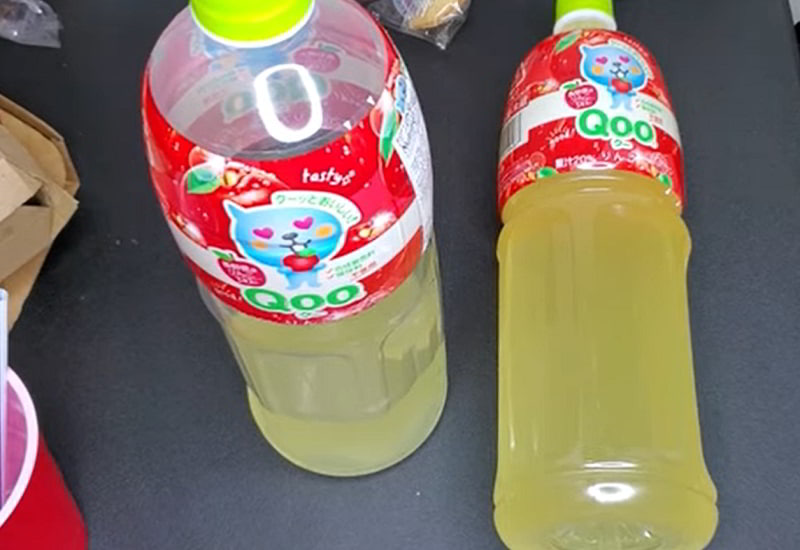
Qoo is a popular fruit-flavored drink produced by The Coca-Cola Company. Introduced in 1999, Qoo quickly became a favorite among both children and adults for its refreshing taste and colorful packaging. Qoo is available in various flavors, including orange, grape, apple, peach, and mixed fruit, catering to different preferences. One of the key features of Qoo is its cute and playful branding, with colorful characters and vibrant designs adorning its bottles and packaging. This has contributed to its popularity among younger consumers. Qoo is marketed as a healthier alternative to traditional soft drinks, as it contains real fruit juice and is often fortified with vitamins. It is commonly sold in individual serving-sized bottles, making it convenient for on-the-go consumption.
C.C. Lemon
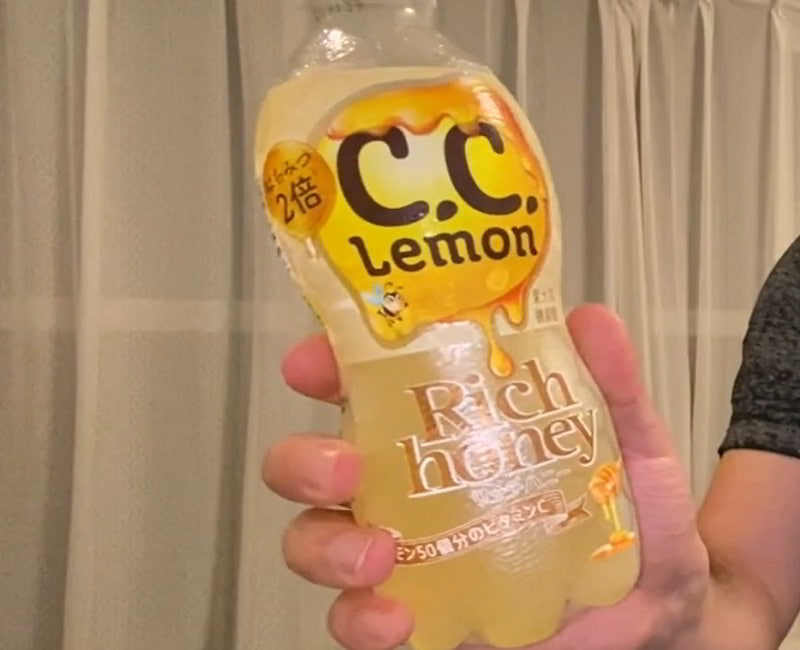
C.C. Lemon is a popular carbonated soft drink produced by the Suntory Beverage & Food Limited. It was first introduced in 1994 and has since become a well-known beverage in Japan and beyond. C.C. Lemon is known for its refreshing taste and unique selling point of containing a high amount of vitamin C. This has made it a popular choice among consumers seeking a refreshing beverage with added nutritional benefits. C.C. Lemon has a slightly tart and citrusy flavor profile, reminiscent of fresh lemon juice, making it a popular choice for those looking for a tangy and invigorating drink. It is often enjoyed chilled, especially during hot summer months, and is available in various sizes, including bottles and cans, for convenience.
Tamagozake

Tamagozake is a hot drink made from eggs, rice wine (sake), and sugar. It is often consumed during the cold winter months as a soothing and warming beverage, particularly for its perceived health benefits. To make tamagozake, sake is heated gently in a saucepan until warm but not boiling. Separately, a raw egg is beaten until frothy, and sugar is added to sweeten the mixture. The beaten egg is then slowly added to the warm sake, stirring continuously to prevent the egg from curdling. The mixture is heated until it reaches a creamy consistency, but care is taken not to overheat it to avoid cooking the egg. Tamagozake is traditionally believed to have medicinal properties and is often consumed as a home remedy for colds, sore throats, and fatigue. It is also enjoyed for its rich and comforting flavor, reminiscent of a sweet, eggnog-like drink. Often served garnished with a sprinkle of nutmeg or cinnamon, tamagozake offers a comforting and indulgent treat during the chilly winter season.
Toso
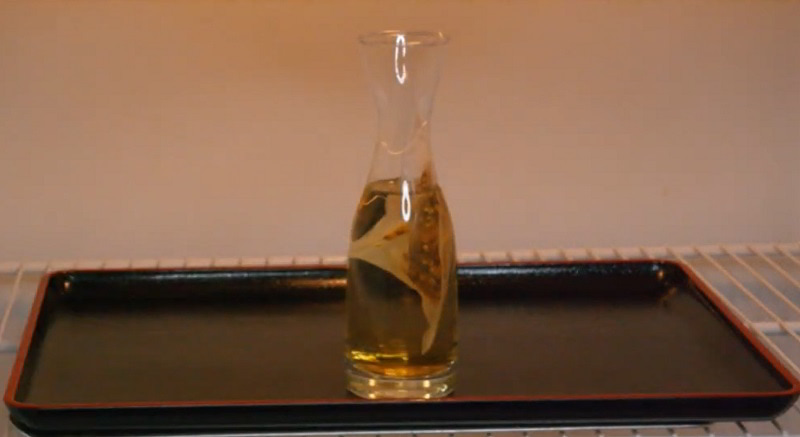
Toso, also known as o-toso, is a spiced medicinal sake traditionally consumed during Japanese New Year festivities. Its origins trace back to a prescription attributed to the renowned Chinese physician Zhang Zhongjing from the Eastern Han period. Over time, the ingredients have evolved, with some original Chinese components deemed too strong for casual consumption. Modern toso recipes often include Japanese pepper, asiasari radix, cinnamon, dried ginger, atractylodes Japonica, Chinese bellflower, and rhubarb, among others. These ingredients are carefully selected for their medicinal properties and blended to create a flavorful and aromatic beverage. Toso is cherished not only for its symbolic significance in bringing health and prosperity for the new year but also for its rich cultural heritage, representing a fusion of Chinese medicinal traditions with Japanese customs and celebrations.
Uji Tea
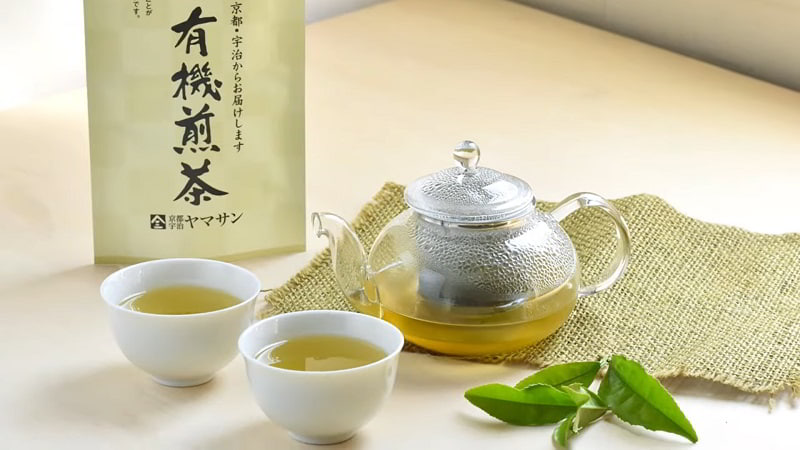
Uji tea, originating from the renowned tea-growing region of Uji in Kyoto Prefecture, Japan, is celebrated for its exceptional quality and flavor. It encompasses various types of green tea, including matcha, sencha, and gyokuro, all cultivated and processed with meticulous care. Matcha, a powdered green tea, is particularly revered for its vibrant green color and rich umami flavor, often used in traditional Japanese tea ceremonies. Sencha, the most common type of green tea, boasts a refreshing taste with grassy notes, while gyokuro offers a delicate sweetness and deep green infusion due to its shaded cultivation. Uji tea's superior quality is attributed to the region's fertile soil, ideal climate, and centuries-old expertise in tea cultivation and processing. Renowned for its balance of sweetness, bitterness, and aroma, Uji tea continues to captivate tea enthusiasts worldwide, embodying the essence of Japanese tea culture and tradition.
Kelp Tea
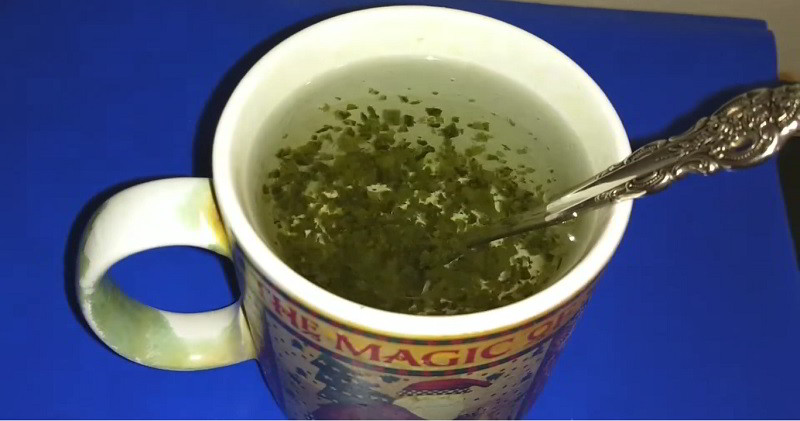
Kelp tea, also known as kombu-cha, is a traditional beverage made from dried kelp seaweed. It is prized for its unique flavor and potential health benefits. To prepare kelp tea, dried kelp is steeped in hot water, releasing its rich umami flavor and imparting a subtle oceanic taste to the brew. The resulting tea is light golden in color and has a refreshing, savory profile. Kelp tea is valued not only for its taste but also for its nutritional properties. Kelp is rich in vitamins, minerals, and antioxidants, making it a nutritious addition to one's diet. It is particularly known for its high iodine content, which supports thyroid health and metabolism. In Japanese cuisine, kelp tea is often enjoyed as a soothing and invigorating beverage, especially during colder months. It can be served hot or cold, depending on preference, and may be sweetened with honey or flavored with other ingredients like ginger or lemon. Overall, kelp tea offers a flavorful and healthful way to enjoy the benefits of seaweed in a comforting drink.
Pepsi Special
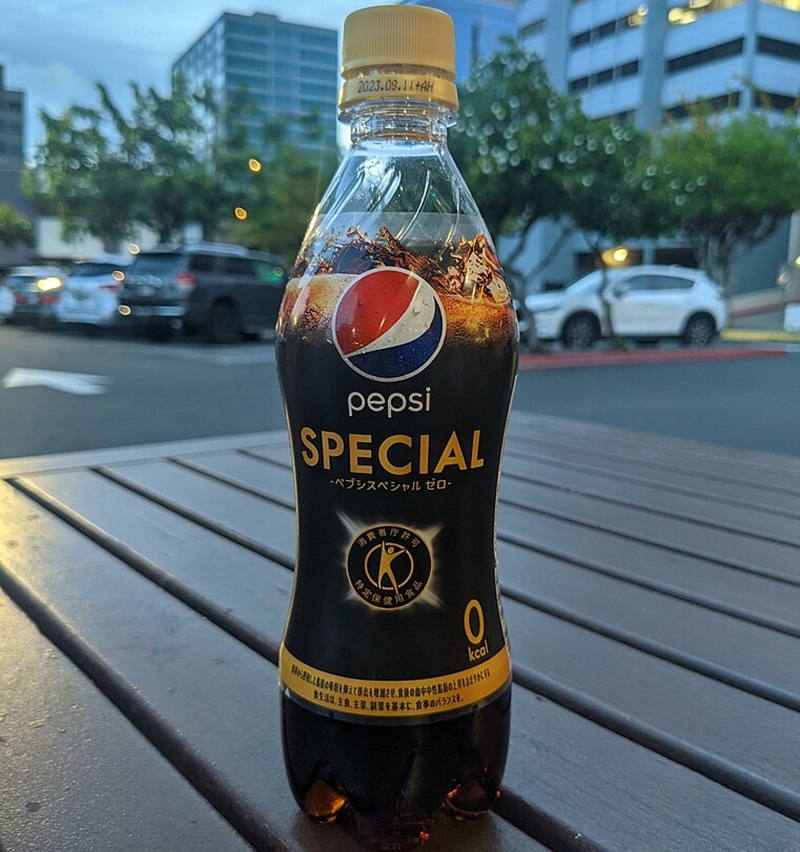
Pepsi Special is a carbonated soft drink produced by PepsiCo, but it is primarily marketed and sold in Japan. Unlike traditional Pepsi variants, Pepsi Special is formulated with added dextrin, a soluble fiber derived from corn. This ingredient is believed to inhibit the absorption of fat in the body, leading to its promotion as a weight-loss aid. Introduced in 2012, Pepsi Special gained attention for its purported slimming properties and became popular among consumers in Japan seeking diet-friendly beverage options. However, its effectiveness as a weight-loss product remains a topic of debate within the scientific community. Despite its unique formulation, Pepsi Special maintains the familiar Pepsi taste, offering a refreshing and satisfying soda experience for consumers in Japan. While it continues to be available in the Japanese market, Pepsi Special is not widely distributed outside of Japan.
Sokenbicha
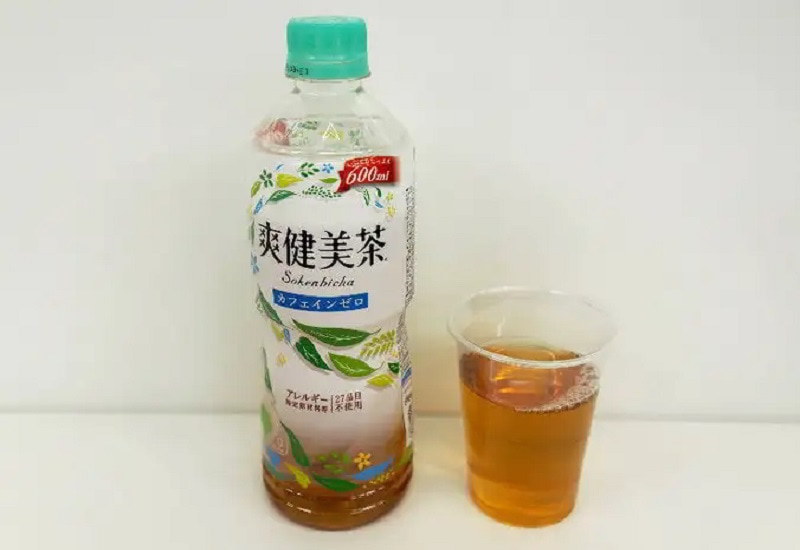
Sokenbicha is a crowd-favorite tea beverage produced by Coca-Cola. Unlike traditional teas, Sokenbicha is a blend of roasted barley, brown rice, and various herbs. It is known for its earthy and slightly nutty flavor profile, with subtle herbal undertones. Originally introduced in 1993, Sokenbicha has gained popularity in Japan as a refreshing and healthful alternative to sugary soft drinks. It is often marketed for its potential health benefits, including supporting digestion and overall wellness due to its herbal ingredients. Sokenbicha is typically consumed cold and is available in various flavors, including original, green tea-infused, and fruit-infused varieties. It is commonly sold in PET bottles and cans, making it convenient for on-the-go consumption. In addition to its popularity in Japan, Sokenbicha has also garnered some international attention, particularly in health-conscious markets where consumers seek natural and functional beverage options.
Kabuse Tea
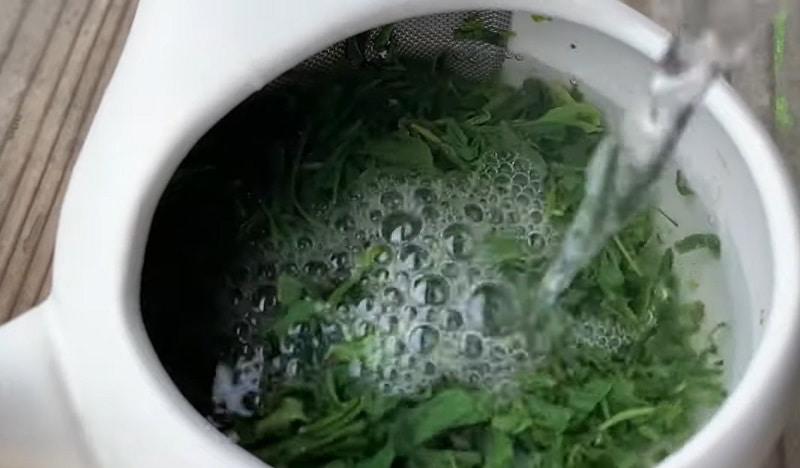
Kabuse tea, also referred to as Kabusecha, represents a shaded green tea variety originating from Japan. The term "Kabuse" denotes the covering or shading method employed during cultivation. Prior to harvesting, tea plants undergo a shading process lasting one to three weeks, akin to Gyokuro tea but for a shorter duration. This shading technique enriches the tea's flavor by fostering the production of chlorophyll and amino acids, concurrently mitigating bitterness. As a consequence, Kabuse tea is celebrated for its harmonious sweetness, umami complexity, and velvety texture. Typically gathered in spring, the tea leaves undergo meticulous processing techniques such as steaming, rolling, and drying to safeguard their delicate essence. Kabuse tea enjoys widespread appreciation as a premium green tea renowned for its nuanced taste and captivating aroma, embodying Japan's esteemed tea culture and craftsmanship.
Sangaria
-1714117965.jpg)
Sangaria, a prominent beverage brand founded in 1984, specializes in crafting a diverse array of refreshing drinks. Their product line encompasses carbonated soft drinks, fruit-flavored sodas, teas, coffees, and fruit juices, reflecting their commitment to offering a wide variety of options to consumers. Renowned for their dedication to quality and innovation, Sangaria meticulously selects ingredients to infuse their beverages with distinct flavors. The brand's popularity extends beyond Japan, with its products being distributed internationally across various countries. Sangaria is distinguished by its iconic glass bottles and vibrant packaging, which resonate with consumers of all demographics. Driven by a passion for creativity and customer satisfaction, Sangaria continuously expands its range of offerings while upholding its position as a premier beverage manufacturer not only in Japan but also in global markets.
Mizone

Mizone is a sports drink crafted by Frucor Suntory, a Japanese-owned beverage company operating in Australasia. Tailored to cater to active lifestyles, Mizone offers a precise blend of essential electrolytes and hydration. Its popularity stems from Frucor Suntory's dedication to quality and innovation, ensuring it meets the needs of those striving for peak performance and refreshment. With a diverse array of flavors, Mizone provides a refreshing option for replenishing fluids during physical activity. Its reliability and effectiveness make it a trusted choice among athletes and fitness enthusiasts alike. Whether you're hitting the gym or engaging in outdoor activities, Mizone stands ready to support your hydration needs, making it a go-to beverage for staying refreshed and energized.
Cold Brew Tea
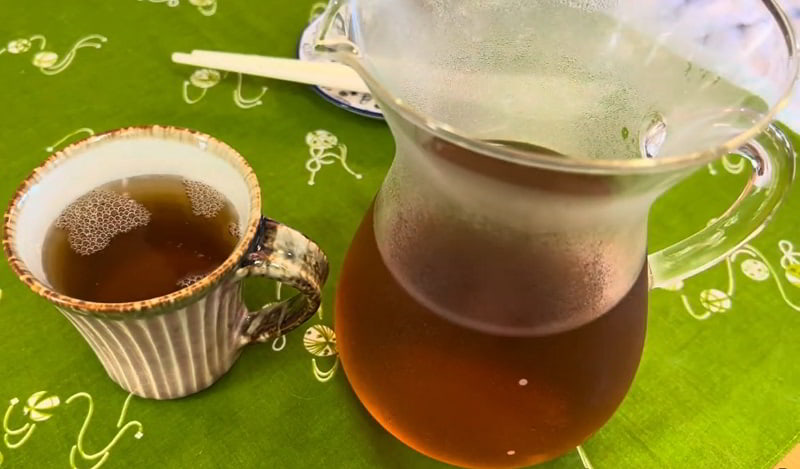
Cold brew tea involves steeping tea leaves in cold or room temperature water over an extended duration, allowing flavors to slowly infuse. Originating from Japan, this method prioritizes gentle extraction to prevent bitterness caused by scorching. Unlike traditional hot brewing, cold brewing relies on time rather than heat to extract flavors, resulting in a smoother taste. This process is favored for its ability to produce a milder, less astringent beverage. By avoiding high temperatures, cold brew tea captures delicate nuances without compromising on taste. This special tea has gained popularity worldwide for its refreshing qualities and versatility. Whether enjoyed plain or with added ingredients like fruit or herbs, cold brew tea offers a refreshing alternative to traditional hot tea, perfect for hot summer days or a soothing drink year-round.
Happōshu
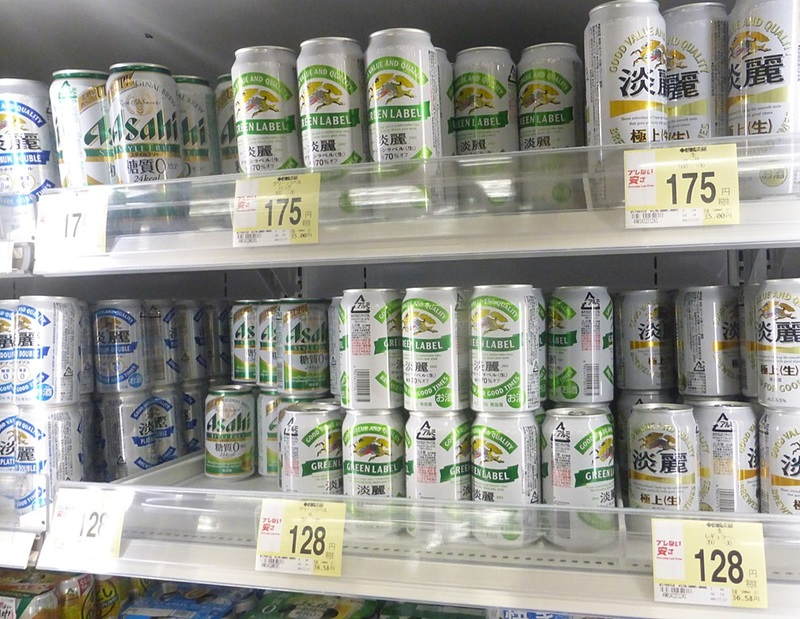
Happōshu is a type of beer-like alcoholic beverage in Japan. It is distinct from traditional beer due to its lower malt content, which reduces its production cost and tax liabilities. Happōshu typically contains a blend of malt, corn, starch, and other adjuncts to mimic the taste of beer while keeping costs lower. While it has a similar appearance and flavor profile to beer, it is generally lighter in taste and has a lower alcohol content. Happōshu gained popularity in Japan due to its affordability compared to beer, making it accessible to a wider consumer base. Despite its lower malt content, it remains a popular choice among Japanese consumers, especially for casual drinking occasions or as a budget-friendly alternative to traditional beer.
Tamaryokucha
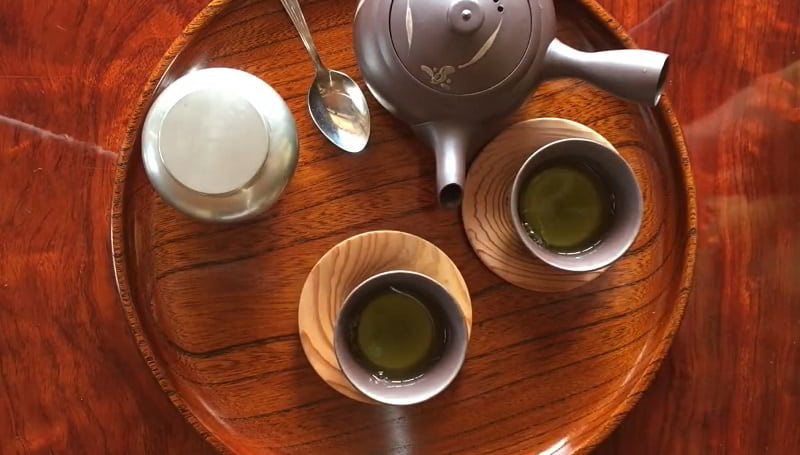
Tamaryokucha, also known as "guricha," is a unique green tea mostly distinguished by its curled or twisted leaf shape and mild taste. Though it primarily undergoes a steaming process, like most Japanese green teas, sometimes it may also experience pan-firing, resulting in a partially oxidized leaf. This combination gives it a distinctive appearance and flavor profile, with a subtle sweetness and a slightly nutty or fruity undertone. Tamaryokucha is often characterized by its vibrant green color and smooth, mellow taste, making it a popular choice among tea enthusiasts. It is typically enjoyed hot or cold and can be brewed multiple times, with each infusion revealing different layers of flavor. Valued not only for its taste but also for its potential health benefits, tamaryokucha contains antioxidants and other compounds believed to promote wellness.
Ambasa
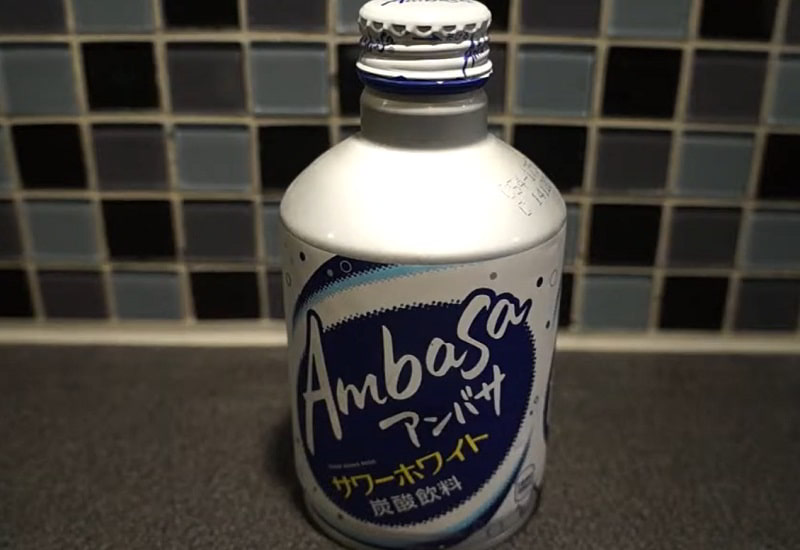
Ambasa, a milk-based soft drink offered by The Coca-Cola Company, made its debut in 1982. This beverage is available in various iterations, including non-carbonated options and fruit-flavored versions such as melon and strawberry. Ambasa stands out for its creamy texture and unique flavor profile, offering consumers a refreshing alternative to traditional carbonated drinks. With its diverse range of options, Ambasa caters to different preferences and occasions, whether it's enjoying a classic milk-based beverage or indulging in the fruity variations. The brand has established itself as a popular choice among consumers, reflecting Coca-Cola's commitment to innovation and meeting the evolving tastes of its customers.
Kamairicha
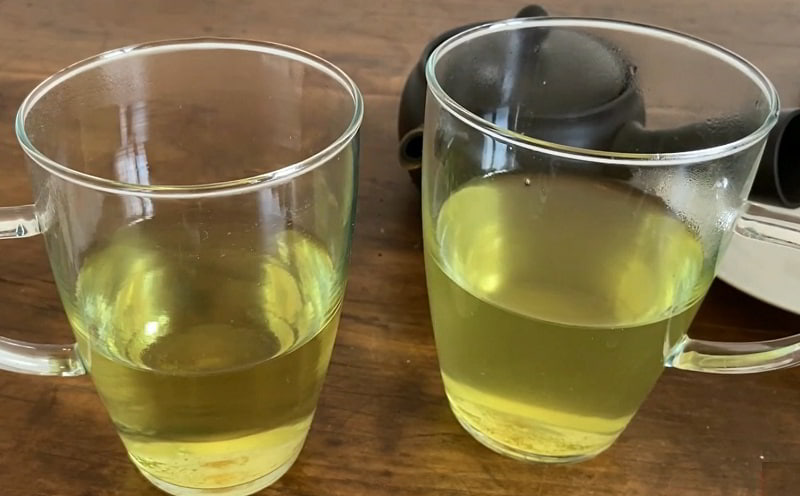
Kamairicha, a green tea primarily cultivated in the western region of Japan, is distinctively crafted through pan-roasting or pan-firing techniques during its early production stages. Unlike typical Japanese teas, Kamairicha skips the conventional steam treatments, resulting in a unique flavor profile characterized by mild roasting and subtle sweetness, rather than pronounced bitterness. After a brief withering process, tea leaves are skillfully fired in hot iron pans at temperatures reaching up to 300°C, with careful agitation to prevent charring. The rolling techniques employed yield leaves shaped like commas or magatama, each contributing to the tea's nuanced flavor and appearance. The resulting Kamairicha boasts a refreshing taste with gentle roasted undertones, reminiscent of pan-fried teas from China. Its light and invigorating character make it a favored choice among tea enthusiasts seeking a delightful departure from traditional green teas.
Arrowroot Tea
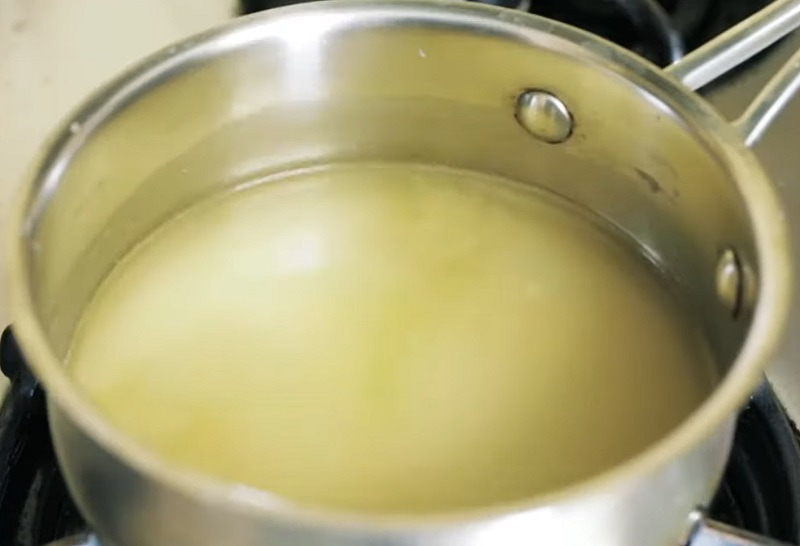
Arrowroot tea, known as Kuzuyu in Japan, is a sweet beverage made by dissolving kudzu flour in hot water. Kudzu flour, derived from the dried root of the kudzu plant, acts as a thickening agent and imparts a unique sweet flavor to the drink. When mixed with hot water, the kudzu flour quickly thickens, resulting in a smooth, honey-like texture and a pale, translucent appearance. Despite its lack of fragrance and taste in powder form, Kuzuyu is prized for its comforting sweetness and soothing properties. It is commonly served in a mug or tea bowl, especially during the winter months, as a warm dessert beverage. Additionally, kudzu flour is versatile and can be used in various East Asian dishes to thicken sauces and soups.
Ayataka
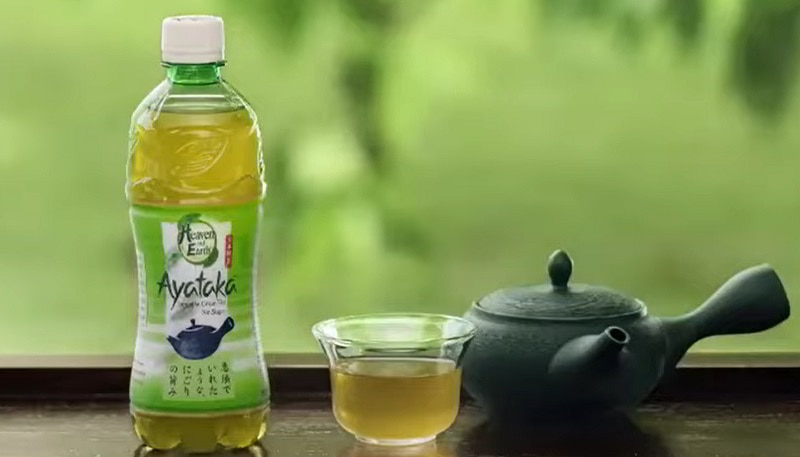
Ayataka is a popular brand of bottled green tea produced by The Coca-Cola Company. It is known for its authentic taste and high-quality ingredients. The tea is made from carefully selected tea leaves, providing a refreshing and aromatic beverage experience. Ayataka green tea is brewed using traditional Japanese methods, ensuring that the natural flavors of the tea are preserved. It is available in various packaging formats, including PET bottles and cans, making it convenient for on-the-go consumption. Ayataka has gained popularity not only in Japan but also internationally, appealing to consumers who appreciate the purity and simplicity of Japanese green tea.
Sakurayu
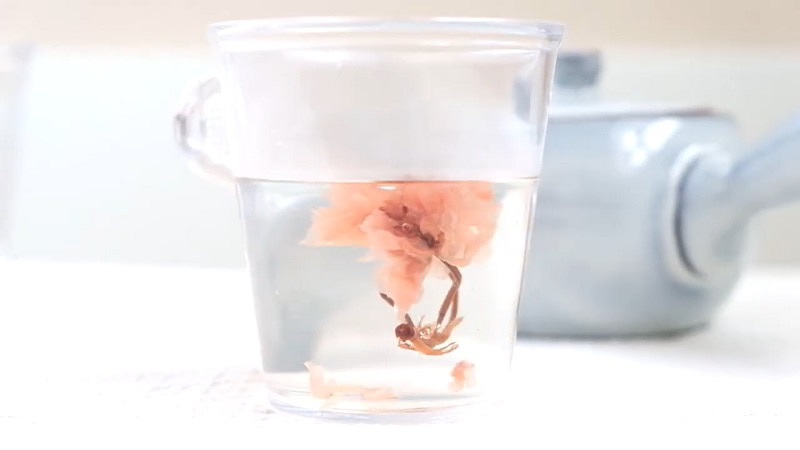
Sakurayu, or cherry blossom tea, is a revered beverage that encapsulates the ethereal charm of cherry blossoms. Crafted by steeping preserved cherry blossoms in hot water, this enchanting drink offers a delicate and floral infusion. Harvested during the vibrant spring season, the cherry blossoms used in Sakurayu ensure a premium taste and quality. Its pale pink hue and subtle aroma evoke the essence of cherry blossoms, delivering a soothing and aromatic experience. Traditionally served in elegant cups during hanami or tea ceremonies, Sakurayu is esteemed for its visual allure and cultural significance. Beyond its sensory delights, Sakurayu is believed to offer health benefits, promoting relaxation, stress reduction, and improved skin complexion.
Omiki
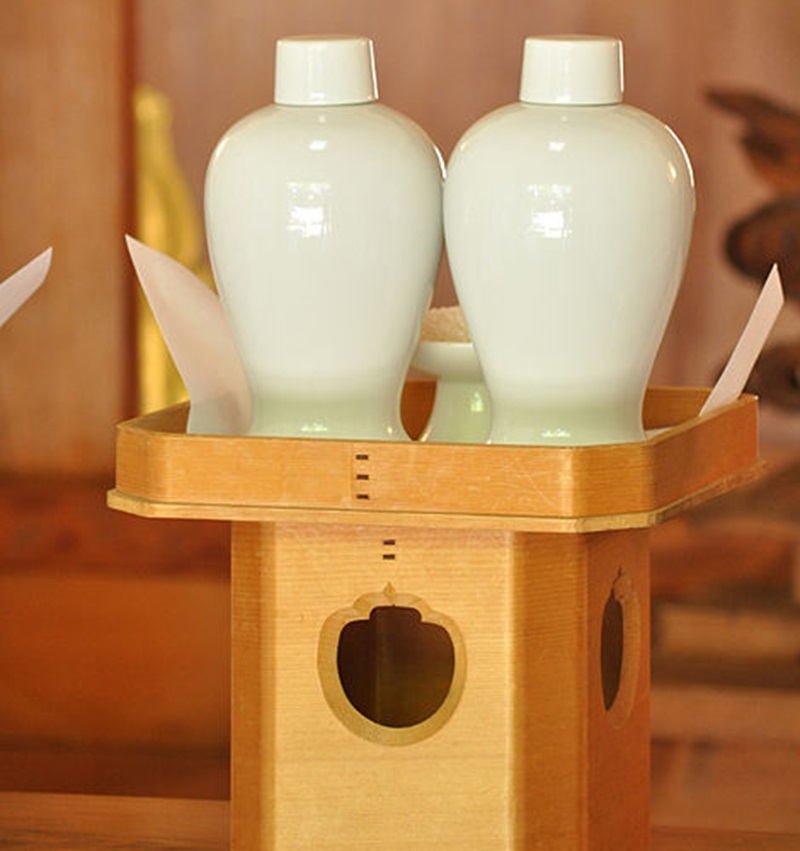
Omiki is revered as a sacred form of sake or other alcoholic beverages in Japanese Shinto rituals. This designation underscores its esteemed status within Shintoism, where it is regarded as a conduit for connecting with the divine realm. Omiki holds deep spiritual significance, symbolizing a channel for communication and communion with the gods. It is offered during purification rites and ceremonies as a gesture of reverence and devotion, seeking blessings and divine favor for various aspects of life, such as bountiful harvests and overall prosperity. Omiki's role as a sacred libation underscores its importance in Shinto tradition as a means of fostering spiritual connections and invoking blessings from the gods.
Saketini
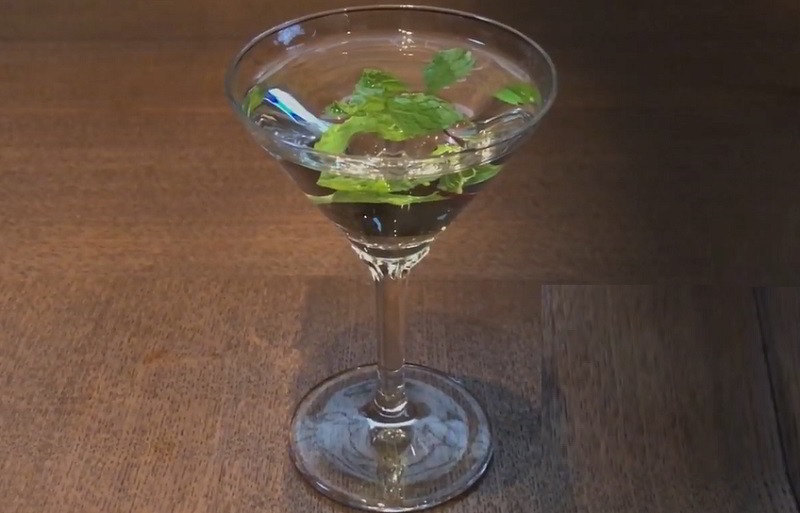
The saketini is a modern cocktail that melds sake with a variety of ingredients, including simple syrups, distilled spirits, liqueurs, juices, and garnishes. This fusion of flavors creates a unique and refreshing beverage. The name "saketini" is a playful blend of "sake" and "martini," evoking the essence of both drinks. While it deviates from the classic martini recipe, which typically features gin and vermouth, the saketini incorporates the martini concept into its own distinct identity. Sought after for its innovative taste and cultural appeal, the saketini has gained popularity as a trendy cocktail choice. Whether enjoyed at a sophisticated lounge or crafted at home, the saketini offers a delightful twist on traditional cocktail culture, reflecting the evolving preferences of modern drinkers.
Konacha
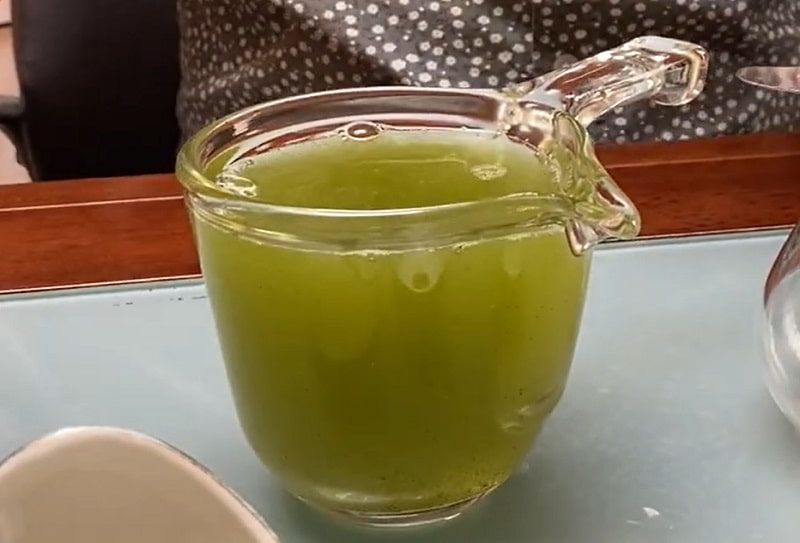
Konacha, a green tea variety, comprises the fine dust, tea buds, and small leaves remaining after Gyokuro or Sencha processing. Recognized for its affordability, Konacha is a popular choice at sushi restaurants and is sometimes marketed as Gyokurokonacha. With its robust flavor profile, Konacha is favored for culinary applications, adding depth to dishes with its distinctive taste. Its versatility in cooking makes it a go-to ingredient for various recipes, contributing its unique essence to soups, sauces, and other culinary creations. Despite being less expensive than Sencha, Konacha maintains its appeal among tea enthusiasts and chefs alike for its ability to enhance the flavor profile of dishes while offering an economical option for culinary experimentation.
Bikkle
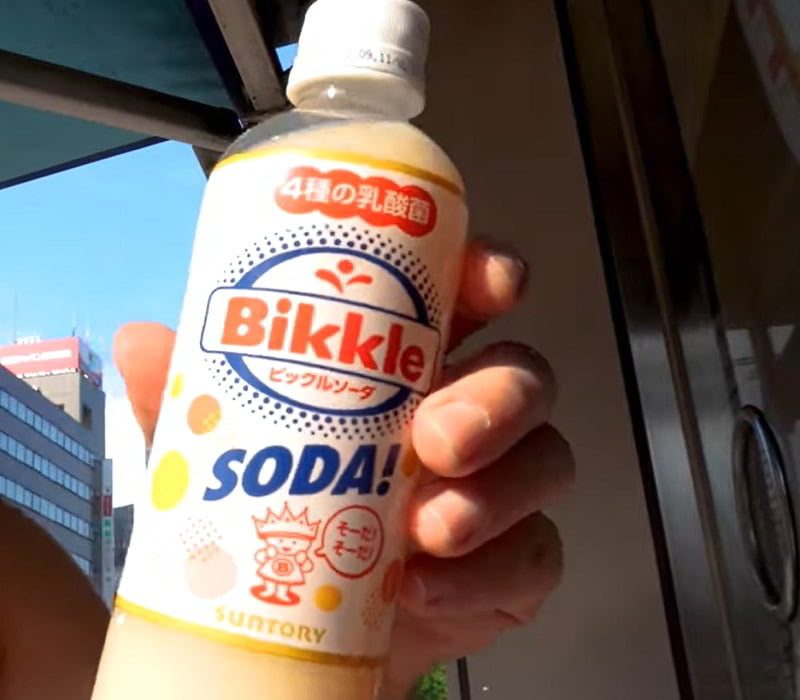
Bikkle, a yogurt-based beverage originating from Japan, is manufactured by the renowned Japanese beverage company, Suntory. Widely available in vending machines, convenience stores, and supermarkets, Bikkle is packaged in small glass bottles, although a larger 500ml plastic bottle, "Big Bikkle," has been introduced since 2007. Renowned for its distinctive taste and catchy name, Bikkle has gained a cult following among both Japanese locals and expatriates residing in Japan. Its flavor has been likened to Yakult, with hints of oranges and cream, adding to its appeal. The unique combination of yogurt and refreshing flavors has contributed to Bikkle's popularity and made it a favored choice for those seeking a refreshing and indulgent beverage option in Japan's bustling drink market.
Match
-1714750549.jpg)
Match is a carbonated soft drink renowned for its balanced sweetness and invigorating taste. Its slight carbonation makes it a thirst-quenching beverage, perfect for any occasion. Marketed as a revitalizing drink, Match is enriched with vitamins, minerals, and fine carbonic acid, offering a refreshing boost with every sip. Recently, Match expanded its product line to include a lychee-flavored version presented in jelly form, providing consumers with a unique and delightful twist on the classic drink. Whether enjoyed on its own or paired with a meal, Match remains a popular choice among those seeking a flavorful and rejuvenating beverage experience.
Amacha
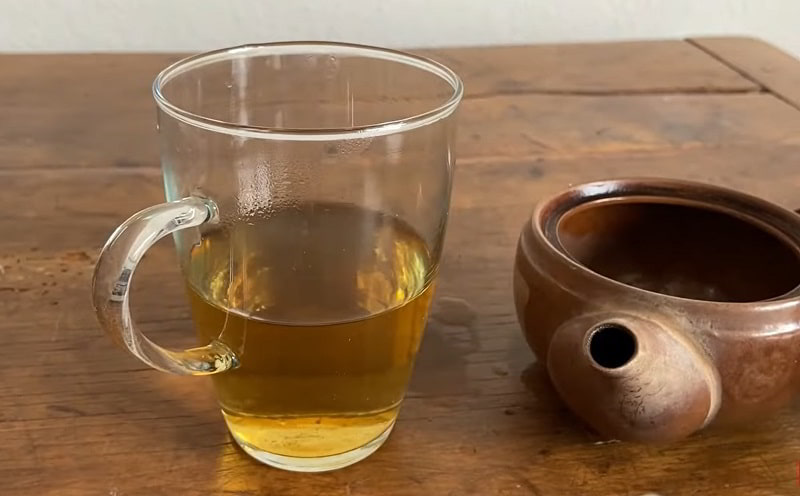
Amacha, translating to "sweet tea," is an herbal infusion crafted from the fermented leaves of Hydrangea macrophylla var. thunbergii. This unique tea boasts a natural sweetness attributed to the presence of tannin and phyllodulcin, a potent sweetener that surpasses table sugar in intensity. Notably, amacha contains no caffeine, making it a soothing alternative to traditional teas. Renowned for its antiallergic properties, amacha is also believed to aid in the prevention of periodontitis. Its significance extends to cultural observances, particularly during ceremonies commemorating Buddha's Birthday in Japanese Buddhism on April 8. During these rituals, individuals pour amacha over small Buddha statues adorned with flowers, symbolizing a nurturing gesture akin to bathing a newborn baby.
Koso
-1714128816.jpg)
Koso is a traditional beverage made from fermented vegetables, fruits, and herbs. It is rich in probiotics, enzymes, and organic acids, which are believed to promote gut health and overall well-being. The fermentation process enhances the nutritional content of koso, resulting in a tangy, slightly sour flavor profile. Common ingredients used in koso include cabbage, carrots, radishes, apples, ginger, and various herbs and spices. It is typically consumed as a daily tonic or health supplement, often diluted with water or mixed into smoothies. Koso is valued for its potential digestive benefits, including improved digestion, gut flora balance, and immune function support. Additionally, it is considered a source of natural energy and vitality. In recent years, koso has gained popularity as a wellness drink in Japan and beyond, appealing to those seeking natural ways to enhance their health and wellness routines.
Aracha

Aracha, also known as crude tea or unrefined tea, is a type of green tea that undergoes minimal processing compared to refined teas like sencha or gyokuro. This tea is characterized by its raw and unsorted form, containing a mix of tea leaves, stems, and other residues after the initial processing steps of steaming, rolling, and drying. Aracha is often produced in larger quantities and sold to tea wholesalers or further processed by tea manufacturers. While it may lack the uniformity in flavor and quality found in refined teas, aracha is appreciated by some for its more rustic and robust tea-drinking experience. Additionally, it can serve as a base for blending or flavoring other tea products, showcasing its versatility within the realm of Japanese green tea production.
Fibe Mini

Fibe Mini is a soft drink enriched with dietary fiber, manufactured by Otsuka Pharmaceutical. Introduced in 1988, it is often regarded as one of the pioneering "functional foods" in Japan. Designed to promote digestive health and overall well-being, Fibe Mini combines the refreshing qualities of a soft drink with the nutritional benefits of added fiber. This innovative beverage reflects a growing awareness of the importance of dietary fiber in maintaining a balanced diet and supporting digestive function. With its unique formulation, Fibe Mini has gained popularity among consumers seeking convenient ways to incorporate fiber into their daily routines.
Jūrokucha

Jūrokucha, marketed by Asahi Soft Drinks in Japan, was originally formulated by Chanson Cosmetics as a dry-blended green tea. Its name translates to "16 teas," representing the blend of sixteen ingredients, including Coix lacryma-jobi var. ma-yuen, barley, black soybeans, and brown rice, among others. These ingredients are rich in dietary fiber, primarily indigestible dextrin, making the drink a recognized health food in Japan. Additionally, it features a decaffeinated variant. The tea's diverse composition offers a unique combination of flavors and nutritional benefits, contributing to its popularity among health-conscious consumers. Jūrokucha embodies the essence of traditional herbal remedies, providing a convenient and enjoyable way to incorporate dietary fiber into one's daily routine. With its blend of grains, leaves, and fruits, Jūrokucha represents a harmonious fusion of flavor and wellness, reflecting both culinary enjoyment and holistic health practices.
Mecha
-1714899937.jpg)
Mecha, a type of green tea, owes its name to the tender leaf buds crucial for crafting this special brew. Harvested in spring, Mecha is processed as rolled leaf teas, falling between Gyokuro and Sencha in quality. It comprises a collection of leaf buds and tips from early crops, renowned for its robust flavor, notable astringency, and lingering bitter green aftertaste. The sharp flavor and aroma of Mecha are often likened to the finest Sencha teas. The best Mecha yields an aromatic infusion with a soft, clear yellow hue. Its bitter notes make it an ideal choice for post-meal consumption, serving to cleanse the palate. Appreciated for its distinct qualities, Mecha stands as a testament to the nuanced flavors and unblesmished meticulous craftsmanship.
Cheerio
-1714900082.jpg)
Cheerio is a beloved carbonated soft drink originating from Japan, first introduced to consumers in 1963 by the Cheerio Corporation. Available in a variety of flavors, Cheerio initially gained popularity packaged in glass bottles reminiscent of Ramune, offering a unique drinking experience. Over time, the brand adapted to modern packaging trends, transitioning to steel, aluminum cans, and PET bottles. However, Cheerio's iconic glass bottle versions, featuring grape and orange flavors, remain cherished by consumers, primarily found in the Chūbu region southwest of Tokyo and a few vending machines in Kanagawa Prefecture. With its fizzy effervescence and refreshing taste, Cheerio continues to captivate consumers, embodying the essence of both nostalgia and tradition.
Turmeric Tea

Turmeric tea, known as "ukoncha" in Japan, is a traditional herbal beverage that has been enjoyed for centuries for its potential health benefits. Ukoncha is made by steeping dried turmeric root or turmeric powder in hot water, often combined with other ingredients such as ginger, cinnamon, and lemon for added flavor and aroma. While turmeric tea is not as widely consumed in Japan as it is in some other cultures, it is gaining popularity due to the increasing recognition of turmeric's medicinal properties. Ukoncha is appreciated for its earthy taste and warming qualities, making it a comforting drink, especially during colder months. Additionally, turmeric is believed to have anti-inflammatory and antioxidant properties, contributing to its appeal as a health-promoting beverage in Japanese wellness practices.
Goishicha
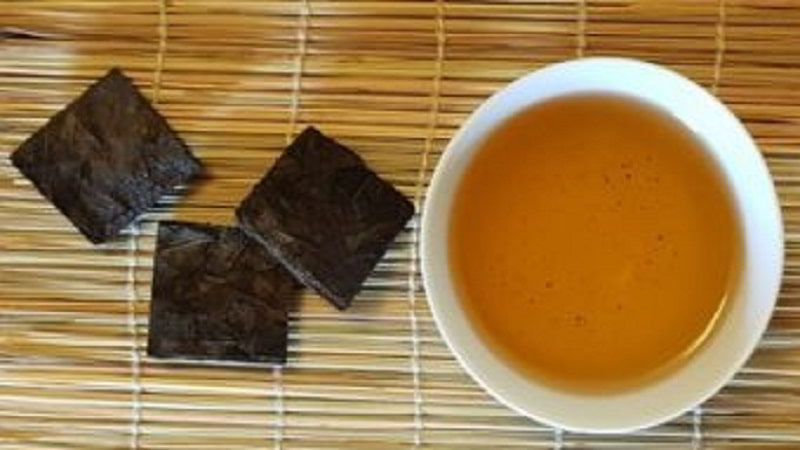
Goishicha is a fermented tea that originated in China and later found its way to Japan. This unique tea is crafted through a distinctive fermentation process involving both aerobic fungi and anaerobic bacteria. The tea leaves undergo a two-step fermentation, resulting in a dark and richly flavored beverage with complex earthy notes. Goishicha stands out among Japanese teas for its intense flavor profile and the depth of its fermentation process. It is particularly revered in regions like Otoyo in Kōchi Prefecture and around Mount Ishizuchi in Ehime Prefecture, where it is produced and celebrated as a specialty tea. With its origins in China but its cultivation and appreciation deeply rooted in Japanese tea culture, Goishicha represents a fascinating fusion of traditions and techniques from both countries, making it a prized treasure among tea connoisseurs.
Shincha
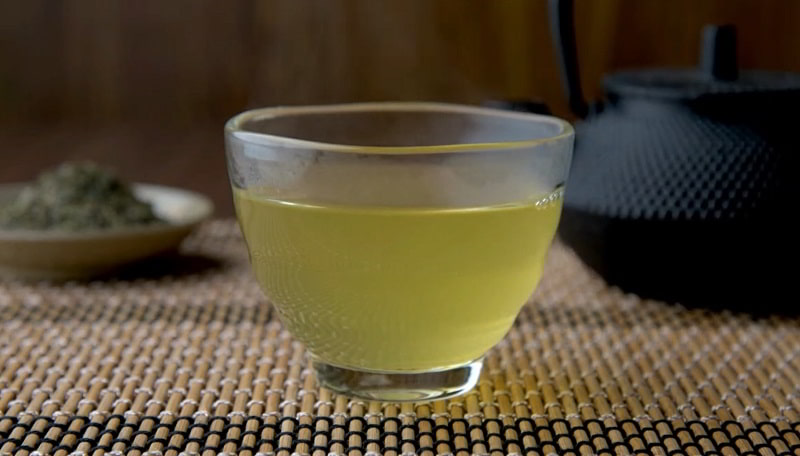
Shincha, also known as "new tea," is a highly prized green tea harvested from the first tender leaves of the tea plant in early spring. It is celebrated for its fresh and vibrant flavor, as well as its bright green color. Shincha is distinguished by its delicate sweetness, subtle bitterness, and refreshing aroma, which are a result of the young leaves' unique composition and growing conditions. The harvesting and production of Shincha are meticulously managed to preserve the tea's delicate qualities, with the leaves carefully picked by hand and quickly processed to maintain their freshness. Due to its limited availability and exceptional taste, Shincha is eagerly anticipated by tea enthusiasts and is often considered a symbol of the arrival of spring in Japan. It is typically enjoyed as a premium beverage, savored for its nuanced flavors and rejuvenating properties.
Sayama Tea
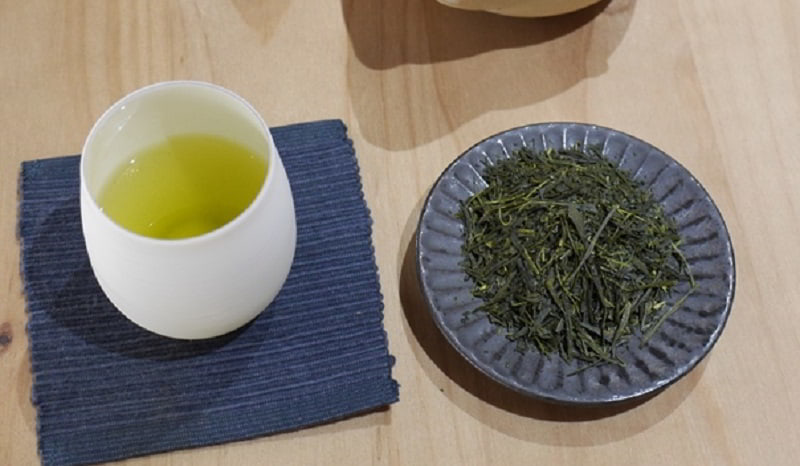
Sayama tea, originating from the southwestern reaches of Saitama Prefecture and parts of Northwestern Tokyo, distinguishes itself among Japan's green teas with its thick, robust leaves. This feature is a direct response to the cooler climate prevalent in the area, where occasional winter frosts occur. To thrive in this environment, the tea trees in Sayama have been selectively bred to develop thick leaves, enhancing their ability to withstand the cold. As a result, the brewed tea boasts a unique flavor profile characterized by a delightful sweetness and depth. Over time, Sayama tea has garnered acclaim for its high levels of antioxidants, surpassing those found in many other green teas.
Tantakatan
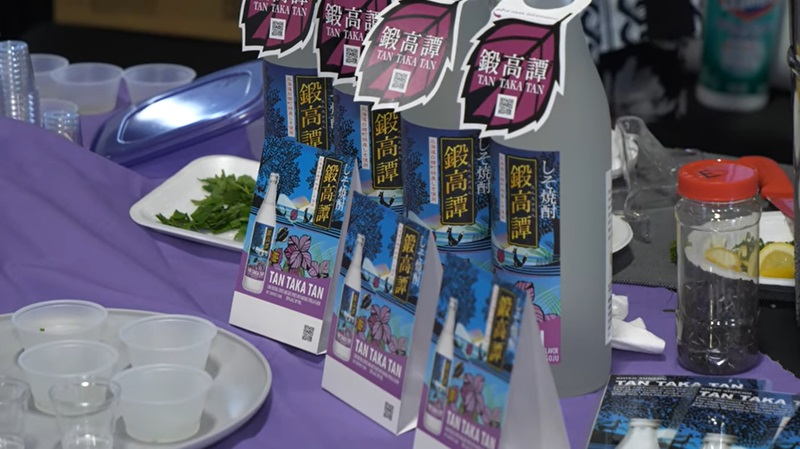
Tantakatan is a type of shōchū crafted from perilla leaves grown in Shiranuka, Asahikawa, Hokkaidō, Japan. Renowned for its distinct flavor profile, this traditional spirit boasts a rich heritage rooted in the lush landscapes of Hokkaidō. With an alcohol content of twenty percent, Tantakatan delivers a smooth and flavorful drinking experience that captures the essence of the region's pristine natural surroundings. Handcrafted with precision and care, each batch of Tantakatan reflects the expertise and dedication of local artisans who uphold centuries-old traditions. From the cultivation of perilla leaves to the meticulous fermentation process, every step is meticulously executed to ensure the highest quality and authenticity. As a celebrated symbol of Hokkaidō's culinary legacy, Tantakatan continues to enchant enthusiasts with its exquisite taste and cultural significance, inviting connoisseurs to embark on a journey through Japan's rich gastronomic heritage.
Chiran Tea
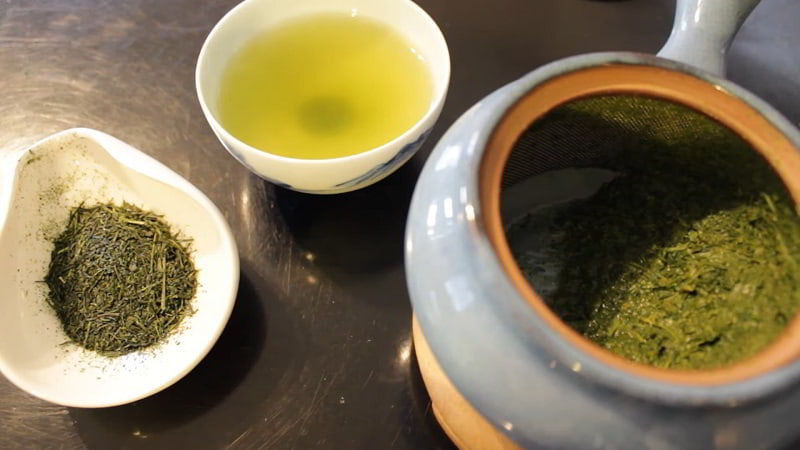
Chiran tea is a type of green tea originating from the Chiran region of Kagoshima Prefecture, Japan. Known for its exceptional quality and unique flavor profile, Chiran tea is highly esteemed among tea enthusiasts. The tea leaves are carefully cultivated and harvested in the fertile soil and ideal climate conditions of Chiran, resulting in a distinctively smooth and aromatic brew. Chiran tea is characterized by its vibrant green color, refreshing taste, and subtle sweetness with a hint of umami. It is often prepared using traditional Japanese tea-making methods, such as steaming and rolling, to preserve its delicate flavors and aroma. Renowned for its balance of flavors and health benefits, Chiran tea is domestically and internationally enjoyed.
Akumochizake
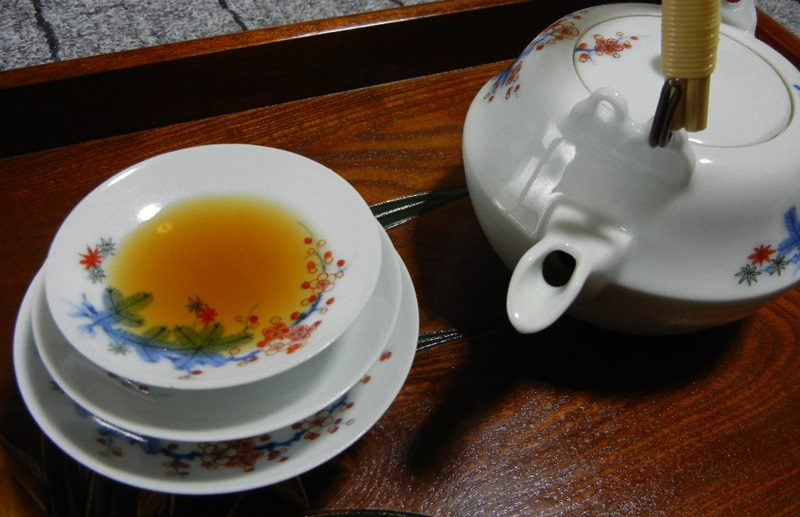
Akumochizake is a distinctive variety of sake brewed with a unique ingredient: ash mixed into the brewing mash. This special concoction is particularly enjoyed during New Year celebrations as a spiced sake. The addition of ash adds a distinctive flavor profile to the sake, giving it a nuanced and complex taste that sets it apart from traditional varieties. This drink holds cultural significance, often being shared and enjoyed during festive occasions and rituals. Its association with New Year festivities adds to its allure and popularity among sake enthusiasts. Akumochizake's rich flavor and symbolic importance make it a cherished part of Japanese drinking traditions, offering a memorable and flavorful experience to those who partake in its consumption during special occasions.
Kohki Tea

Kohki tea, a renowned herbal beverage, boasts exceptionally high antioxidant properties and has been cherished for centuries. This esteemed tea is readily available and is meticulously standardized to contain significant levels of astilbin and taxifolin, two potent antioxidants. These beneficial compounds are derived from the processing of Kohki tea, particularly from the leaves of Engelhardtia chrysolepis, a species known for its rich antioxidant content. With its long-standing history and proven health benefits, Kohki tea remains a staple in Japanese culture and is celebrated for its ability to promote overall well-being. Its antioxidant-rich nature makes it a popular choice among health-conscious individuals seeking natural remedies to support their health.
Kabusecha
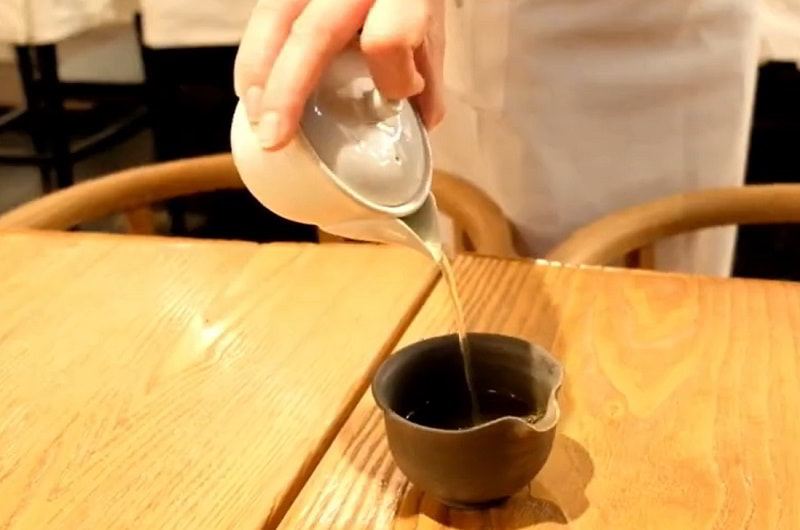
Kabusecha, known as Kabuse tea, is a unique shaded green tea originating from Japan. The name "Kabuse" signifies the shading process it undergoes before harvesting. Tea plants are shielded from direct sunlight for a specific duration, enhancing the tea's flavor by promoting chlorophyll and amino acids production while reducing bitterness. Kabusecha is esteemed for its balanced sweetness, umami richness, and smooth texture, setting it apart from other green teas. Typically harvested in spring, Kabuse tea leaves undergo careful processing, including steaming, rolling, and drying, to preserve their delicate flavors. Appreciated for its nuanced taste and aroma, Kabusecha is integral to Japanese tea culture, often enjoyed during special occasions or quiet moments, offering a tranquil and revitalizing tea-drinking experience.
Kagoshima Green Tea
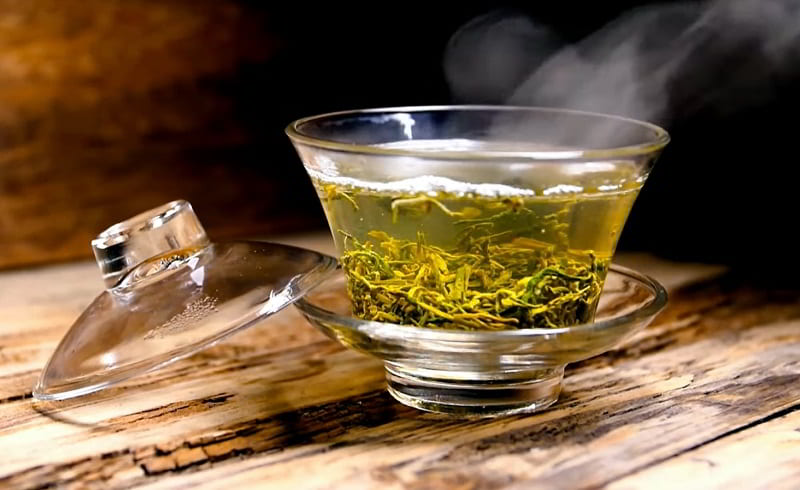
Kagoshima green tea is a type of Japanese green tea produced in Kagoshima Prefecture, located in the southern part of Kyushu Island. Renowned for its rich flavor and aroma, Kagoshima green tea benefits from the region's fertile soil, favorable climate, and abundant rainfall, ideal conditions for tea cultivation. The tea leaves are harvested and processed using traditional methods, including steaming, rolling, and drying, to preserve their natural flavors and nutrients. Kagoshima green tea is characterized by its vibrant green color, fresh grassy aroma, and a delicate, slightly sweet taste with a hint of umami. It is available in various grades, ranging from high-quality sencha to premium gyokuro and matcha, catering to different preferences and occasions. Kagoshima green tea is celebrated for its exceptional quality and is enjoyed both domestically and internationally as a symbol of Japanese tea culture and craftsmanship.
Karigane
-1714131613.jpg)
Karigane, also known as "Kukicha Gyokuro," is a special type of Japanese green tea made from a blend of gyokuro tea leaves and stems. This unique tea offers a harmonious combination of flavors and aromas, characterized by its sweet and slightly nutty taste with floral undertones. To produce karigane, the stems and leaves of gyokuro tea bushes are carefully selected and processed together, resulting in a distinctive flavor profile that is milder than gyokuro but richer than typical sencha. The stems contribute a subtle sweetness, while the leaves impart a smooth and umami-rich character. Karigane is highly regarded for its refreshing taste and health benefits, including high levels of antioxidants and low caffeine content. It is often enjoyed as a soothing and revitalizing beverage, perfect for moments of relaxation and contemplation in Japanese tea culture.
Soy Milk

Soy milk, known as "tonyu" in Japanese, holds a significant place in Japanese cuisine and culture. It is made by soaking soybeans, grinding them with water, and then straining the mixture to produce a creamy, plant-based milk alternative. Soy milk has been consumed in Japan for centuries and is valued for its nutritional benefits, including being a good source of protein, calcium, and vitamins. In Japan, soy milk is enjoyed both on its own and used in various culinary applications. It's commonly consumed for breakfast, either served hot or cold, and is often paired with traditional Japanese breakfast items like rice, miso soup, and pickles. Additionally, it's used in cooking and baking, such as in making tofu, soups, sauces, desserts, and even savory dishes like curries and stews. Soy milk is readily available in supermarkets, convenience stores, and health food stores across Japan, and its popularity continues to grow due to its health benefits and suitability for those with dietary restrictions or preferences.


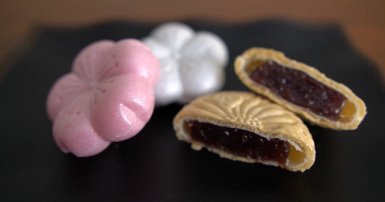
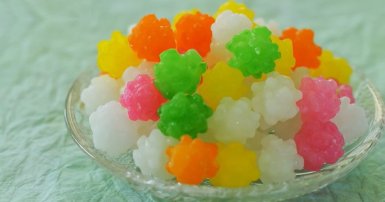
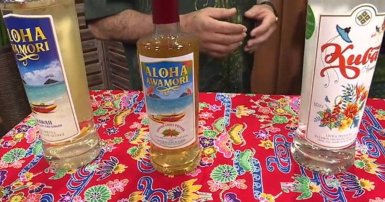
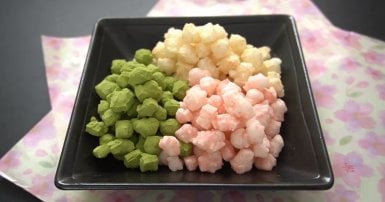
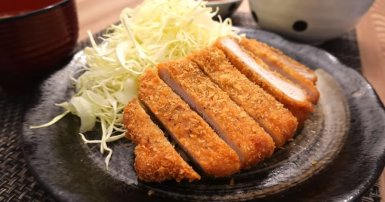
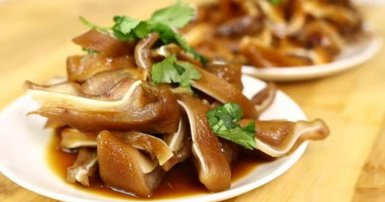

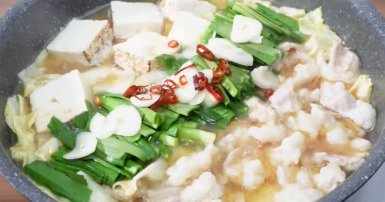

-1709813013.jpg)


